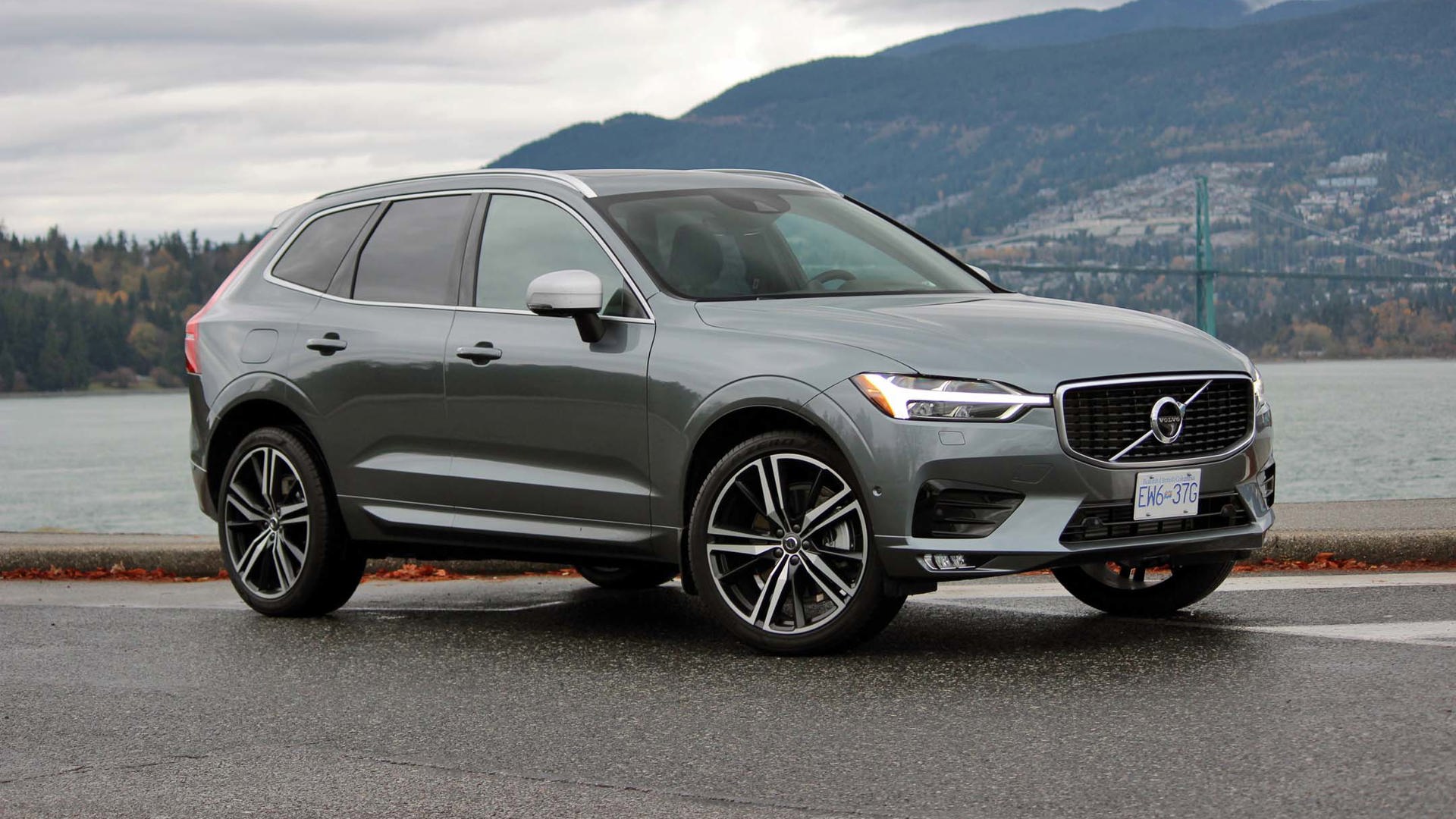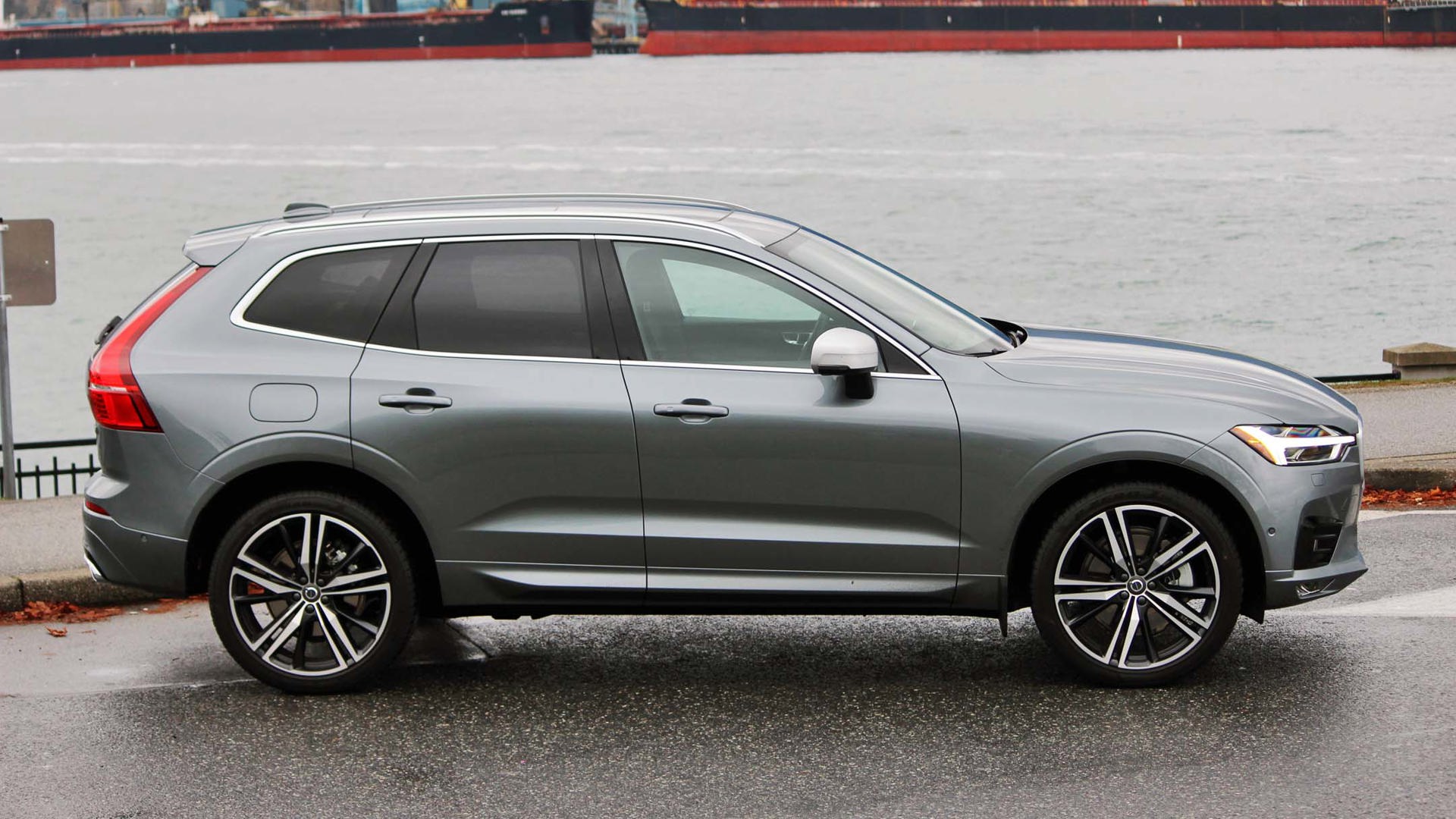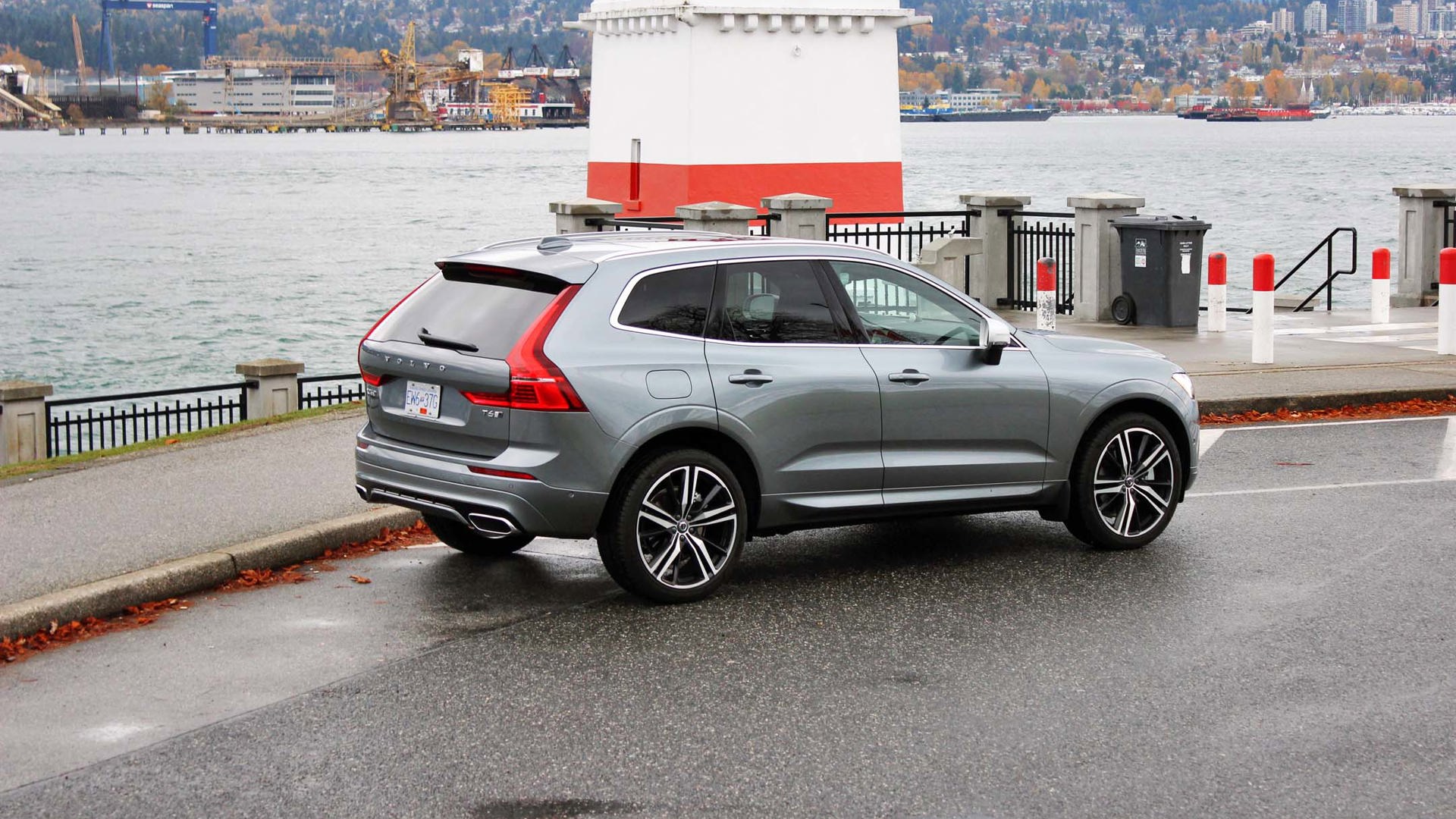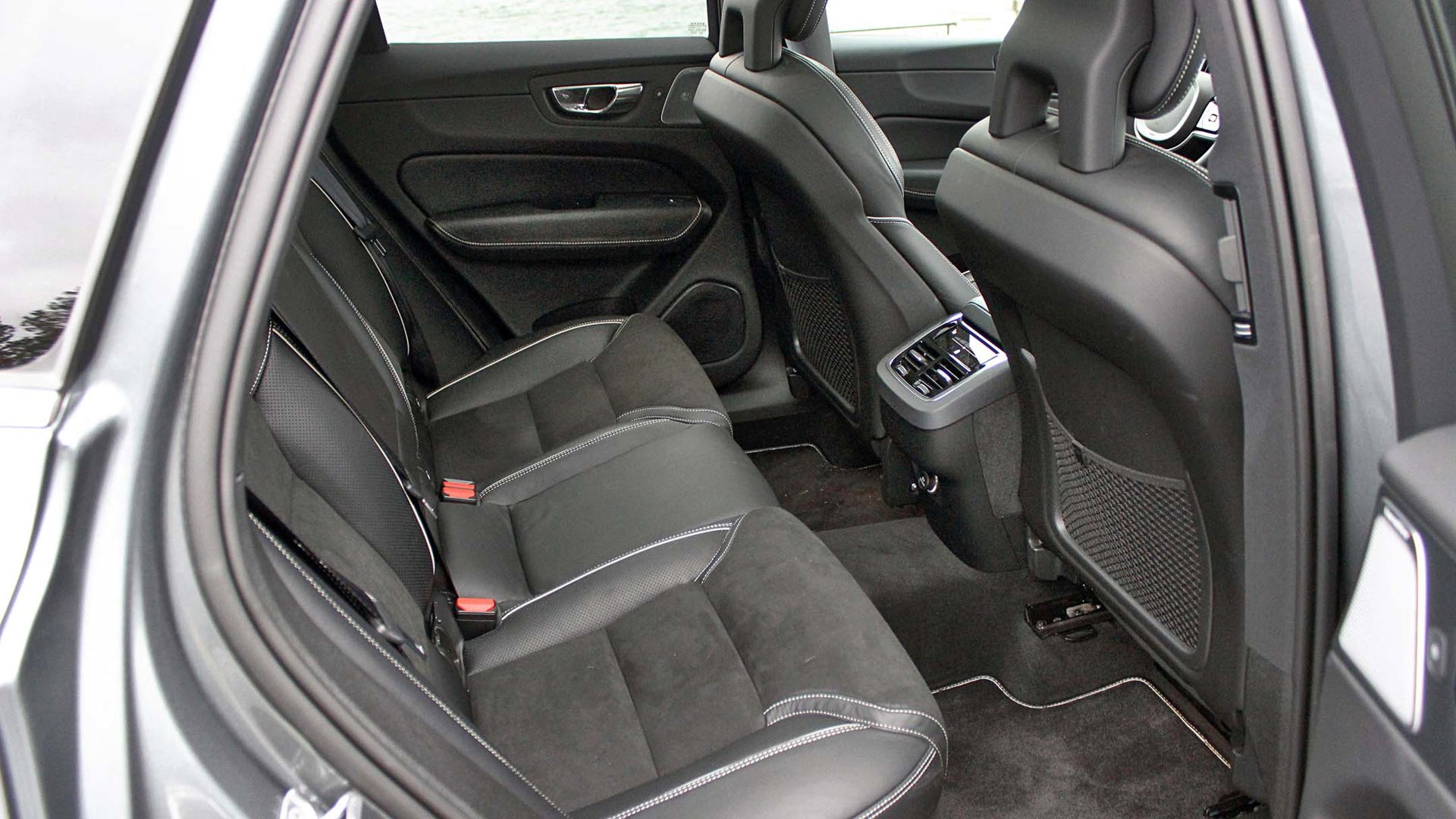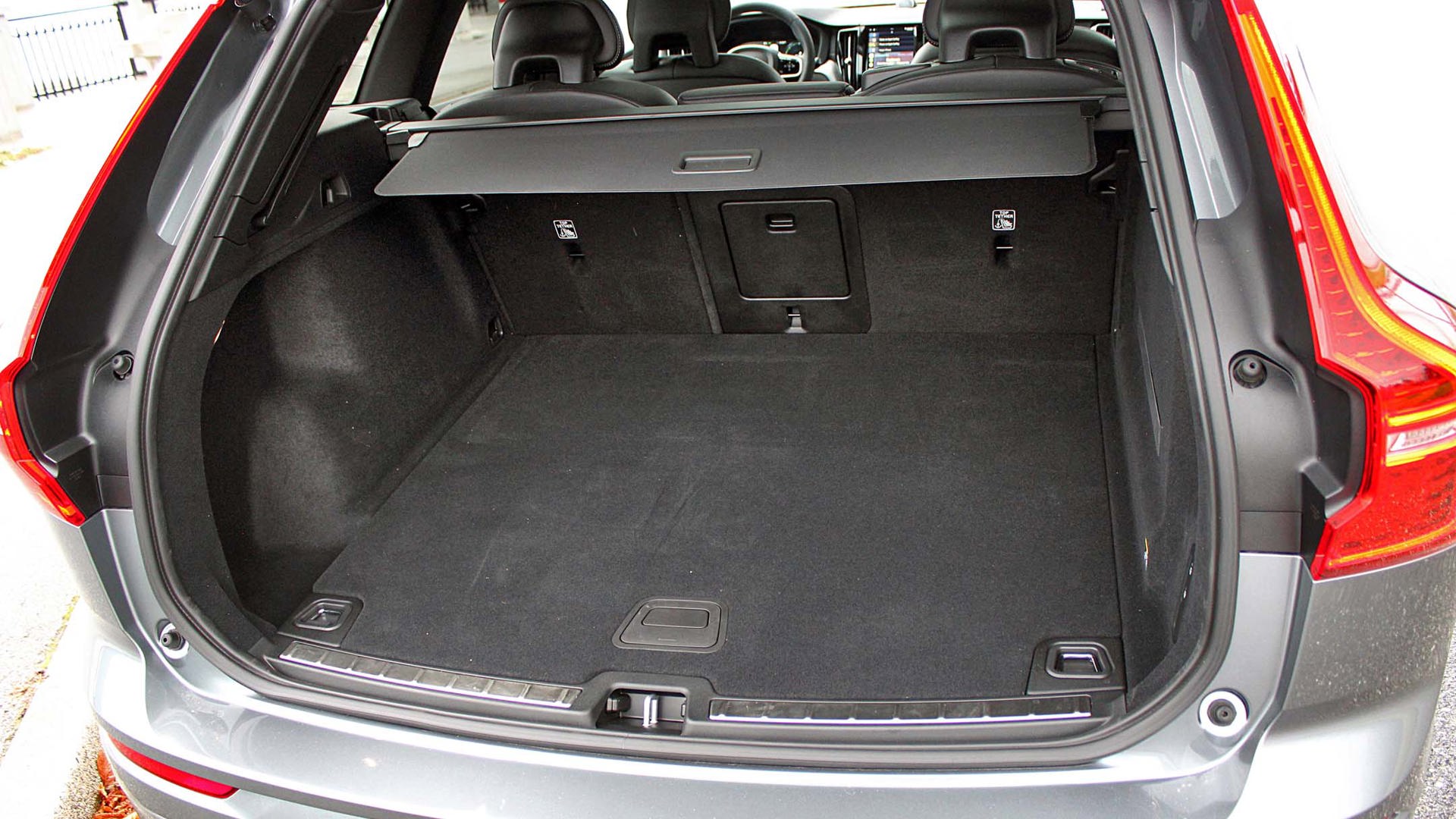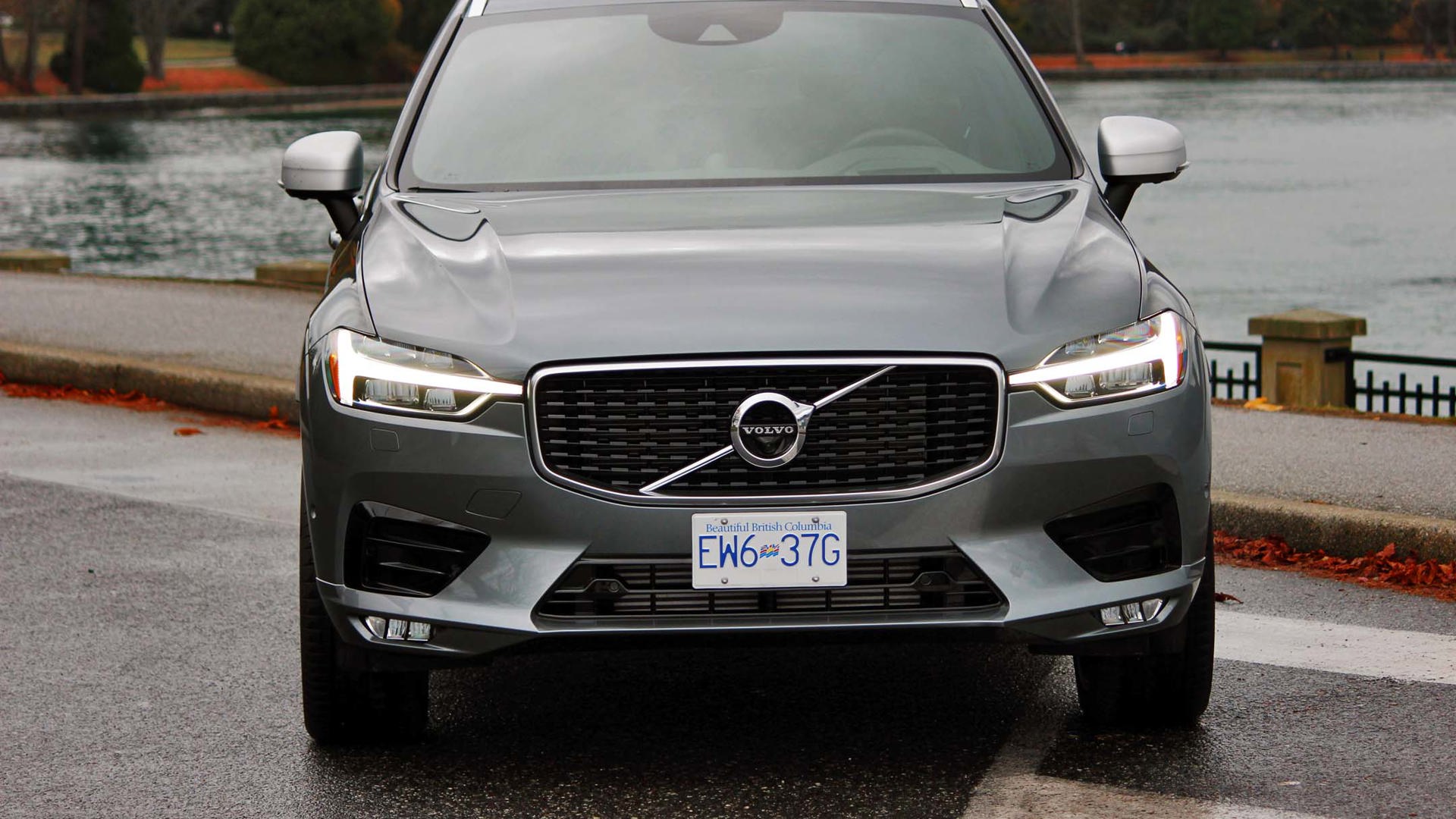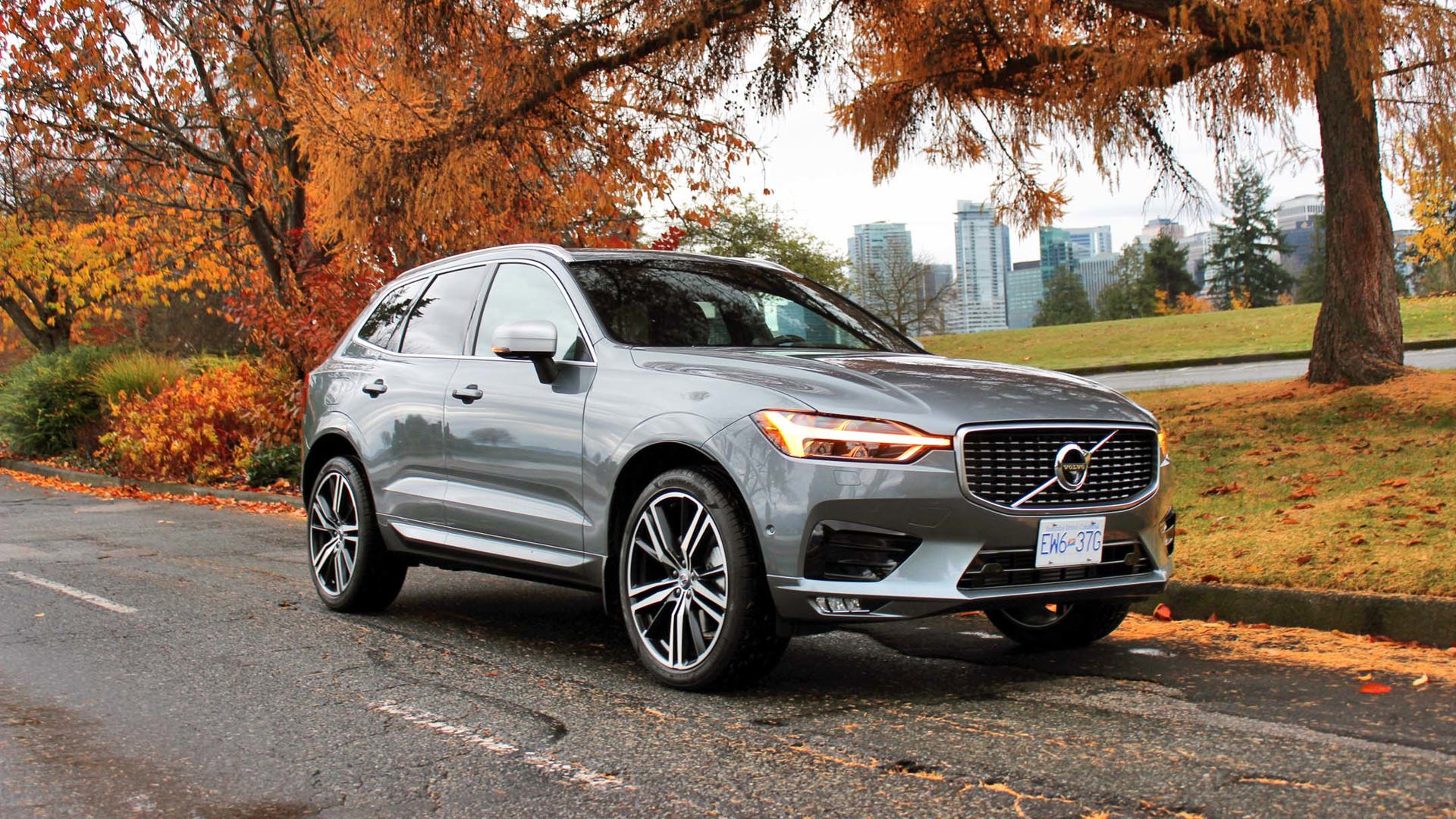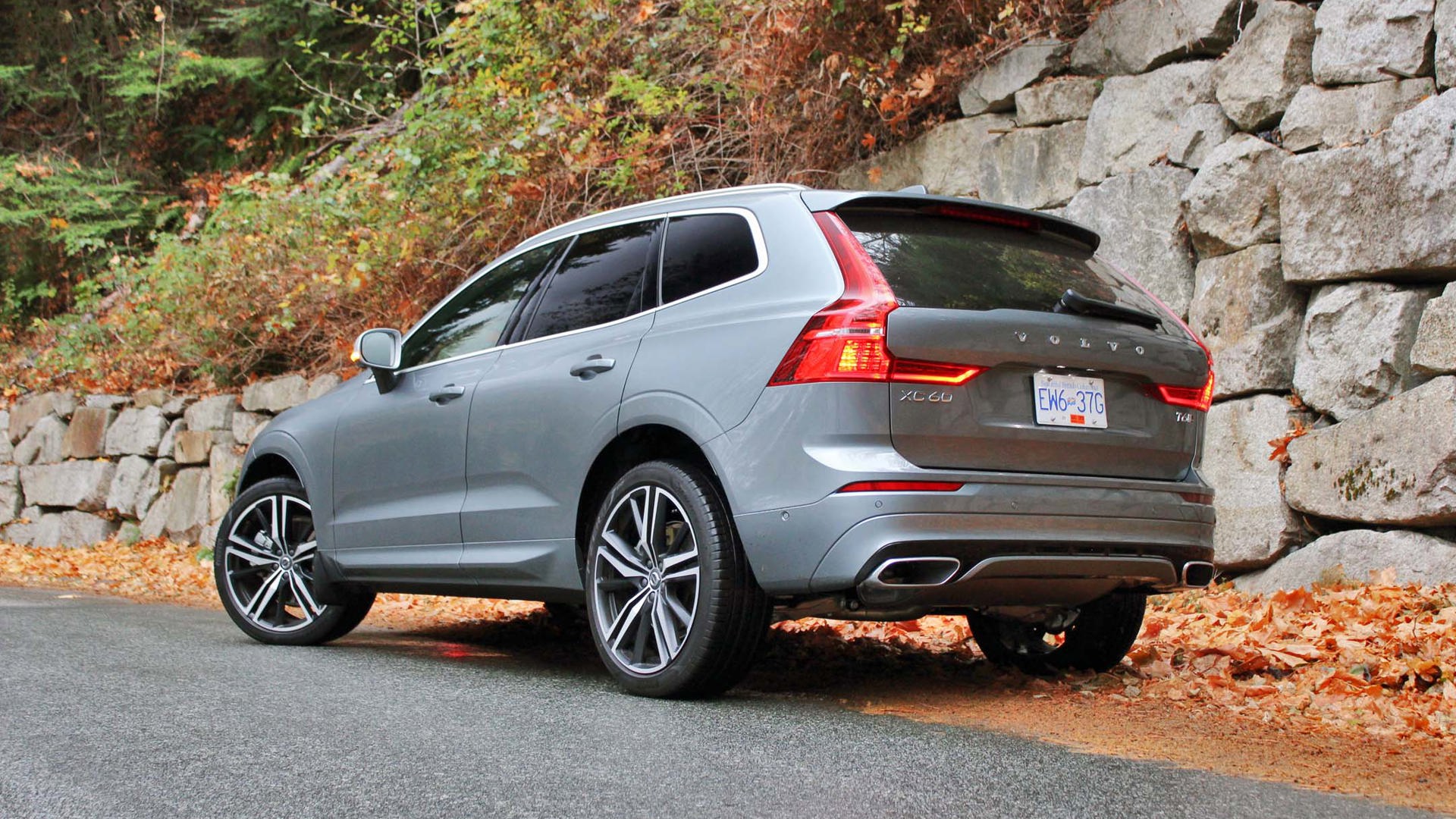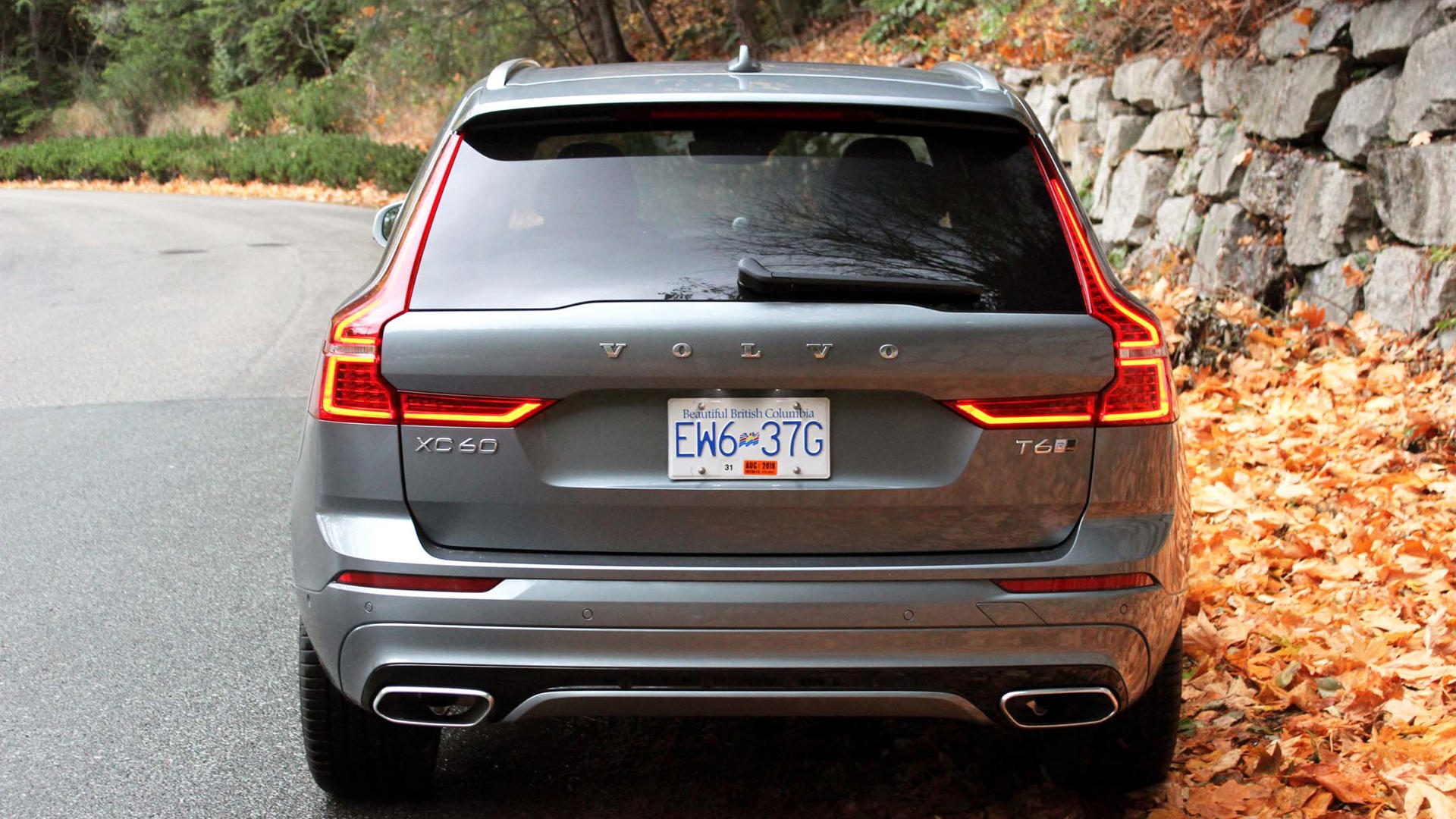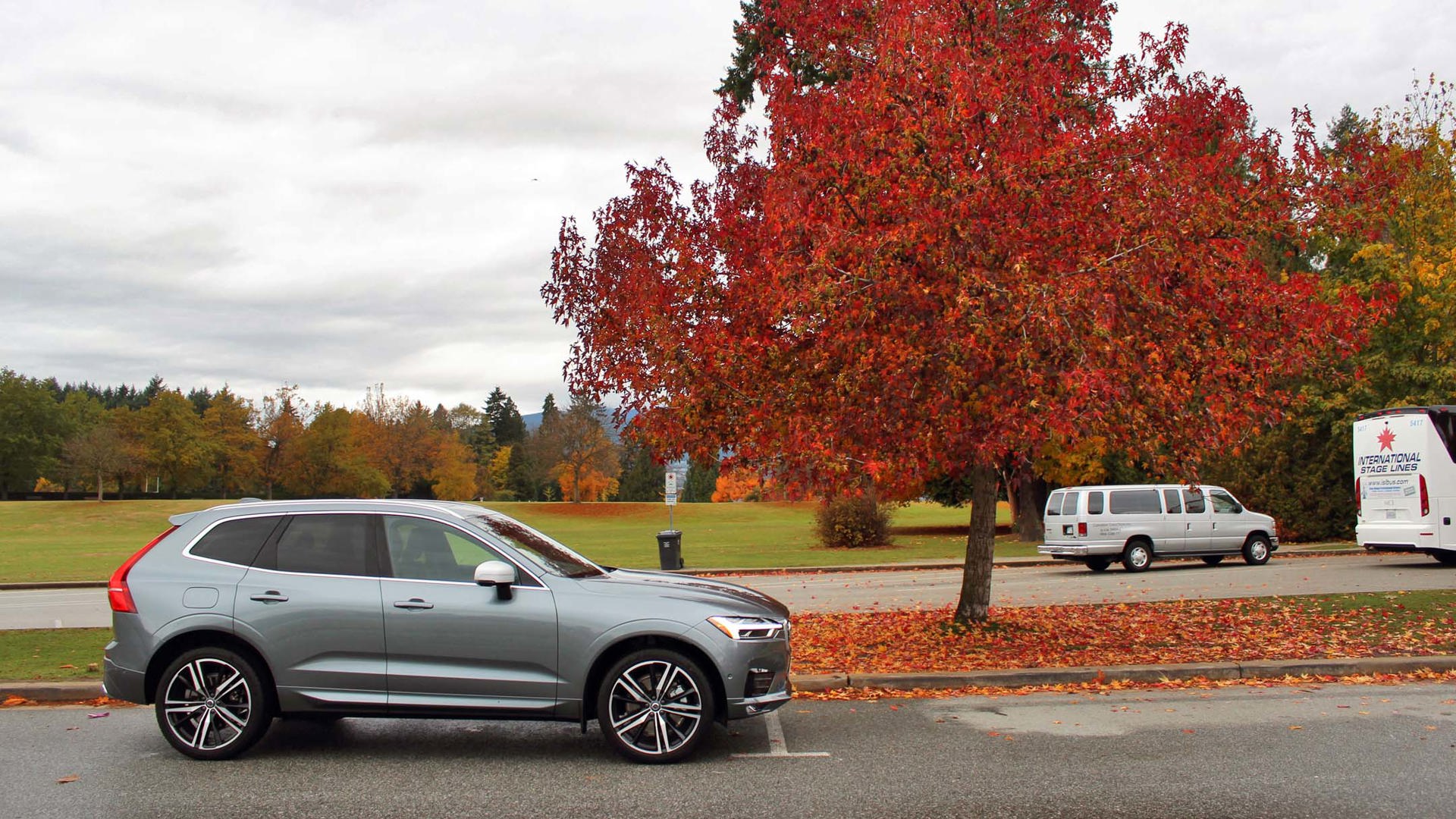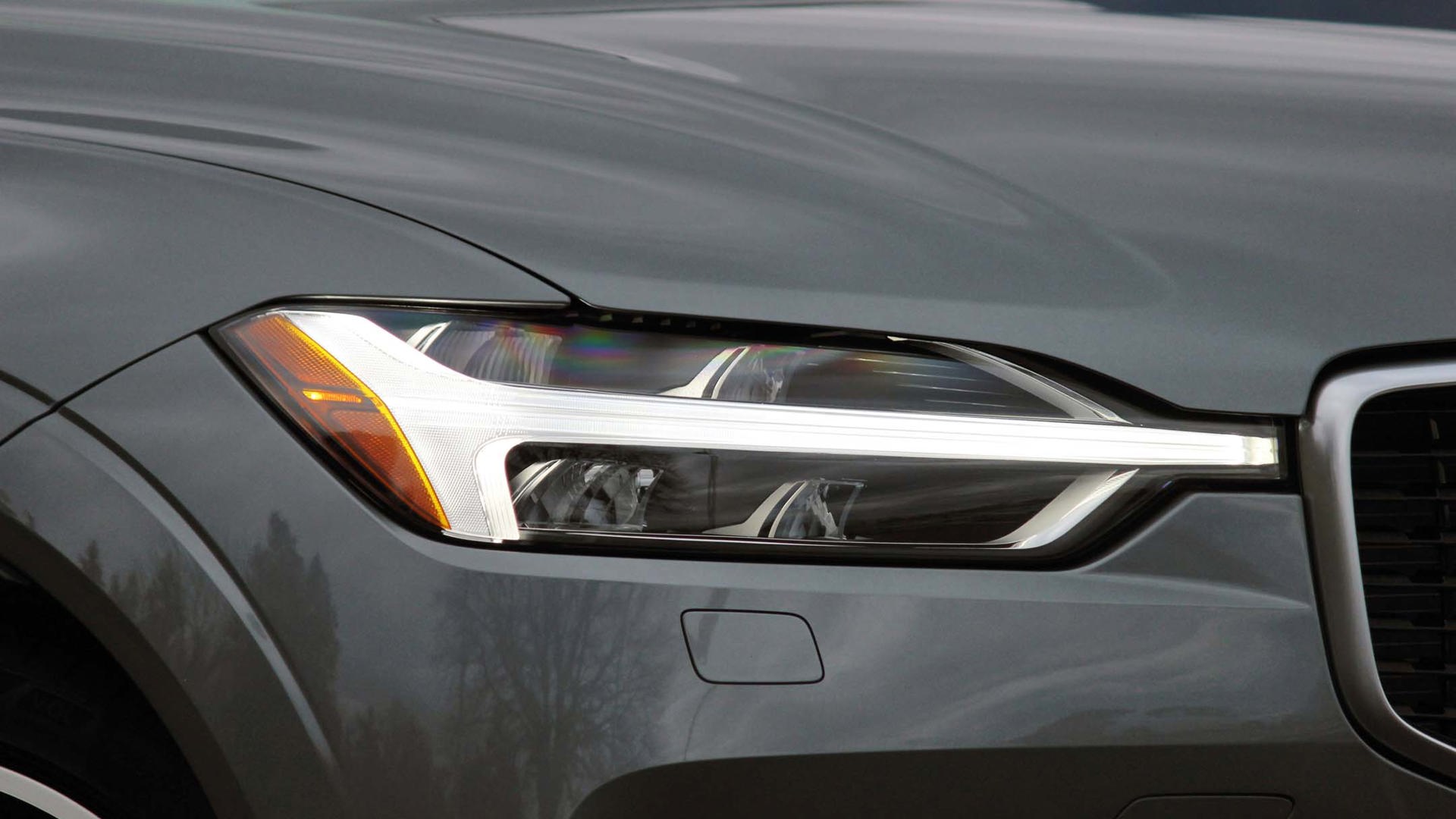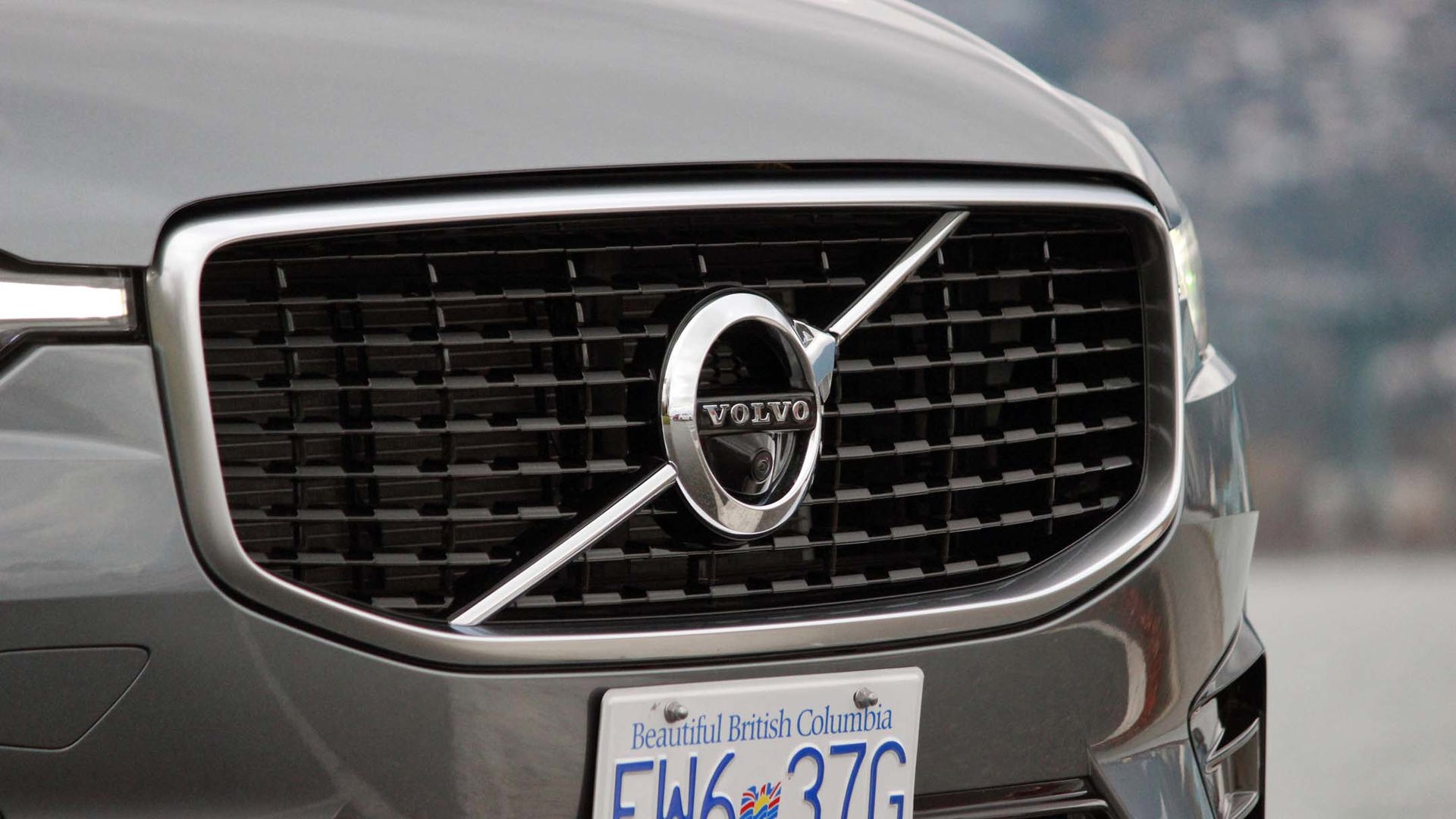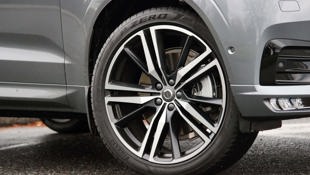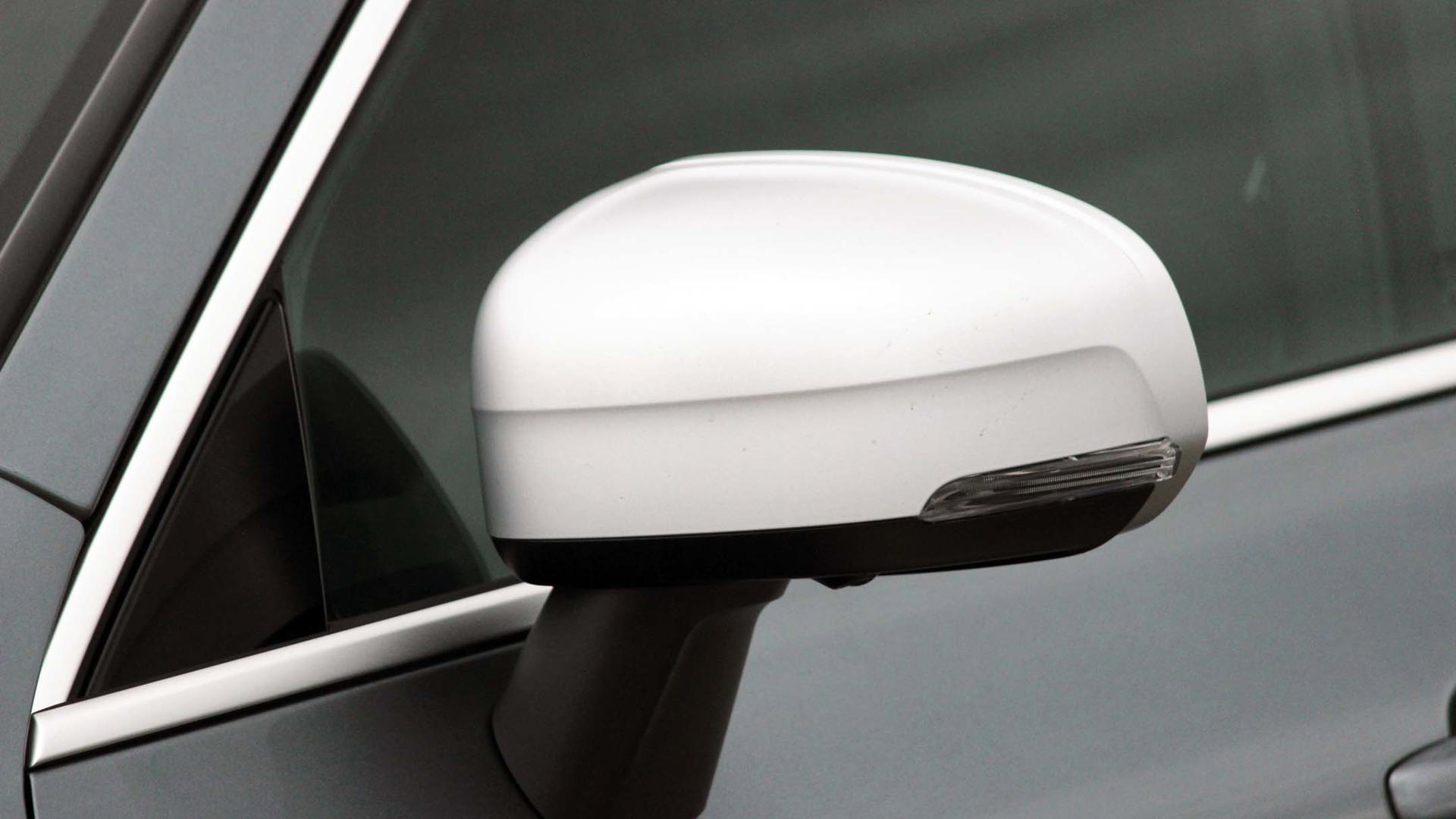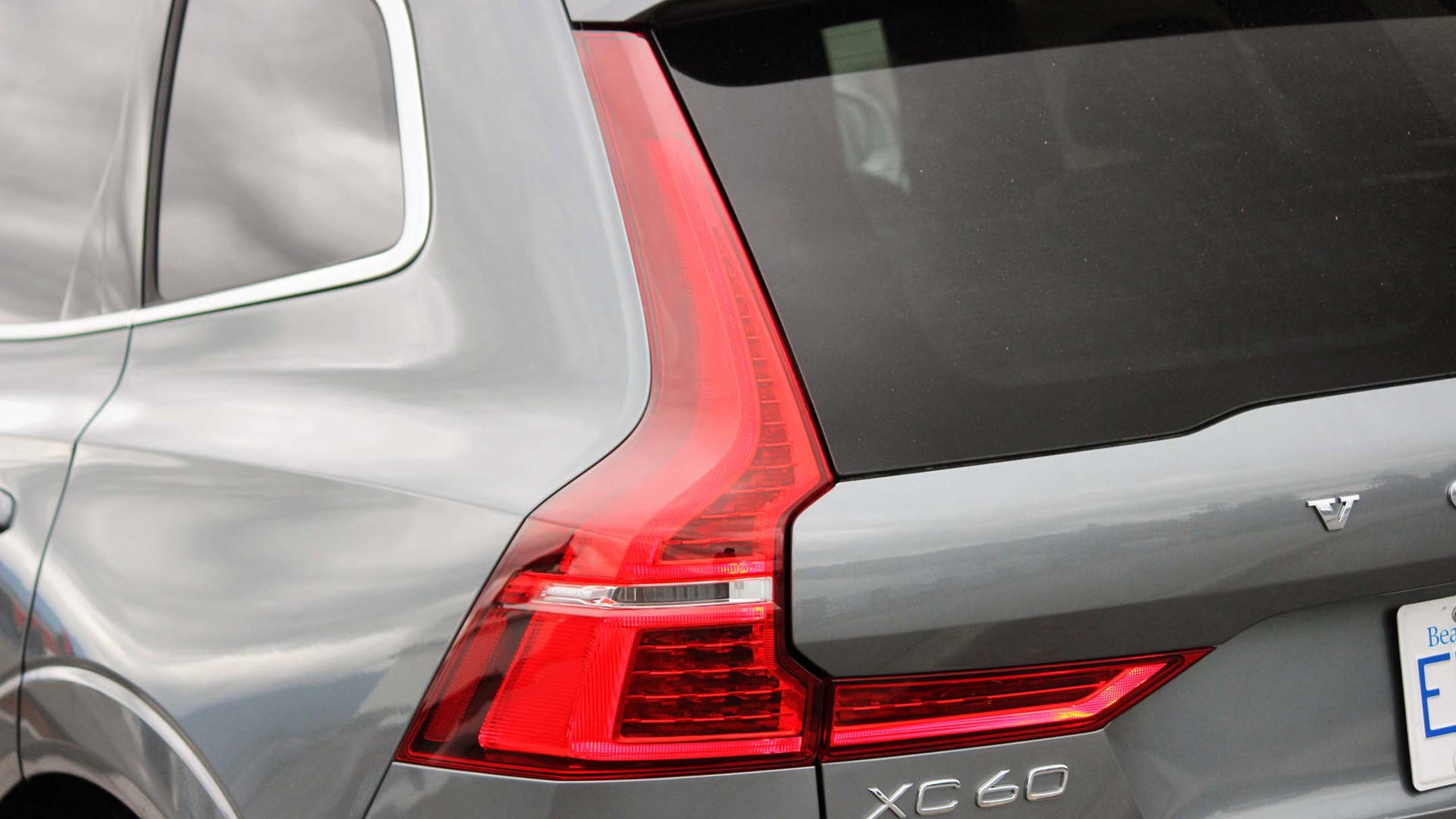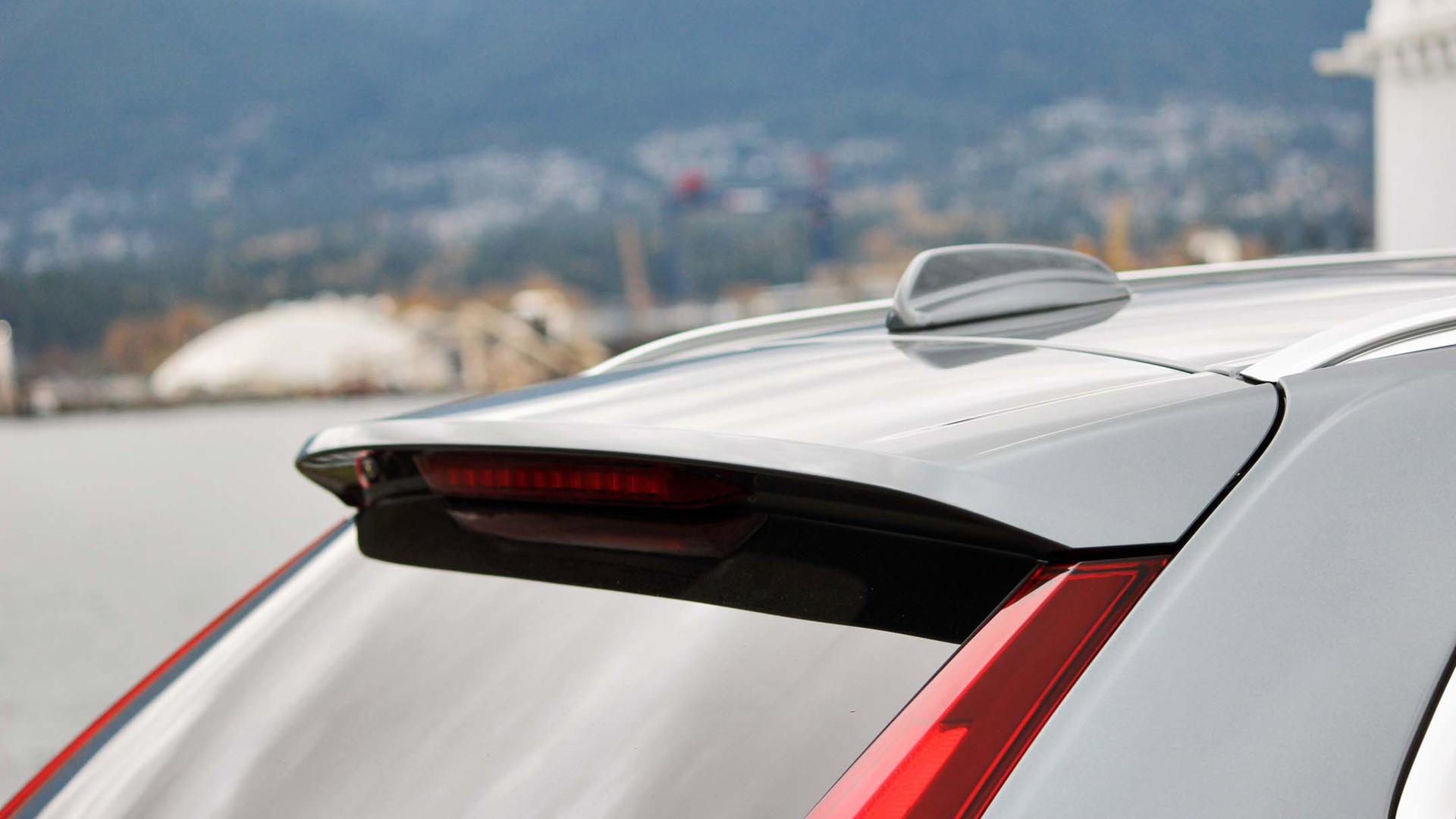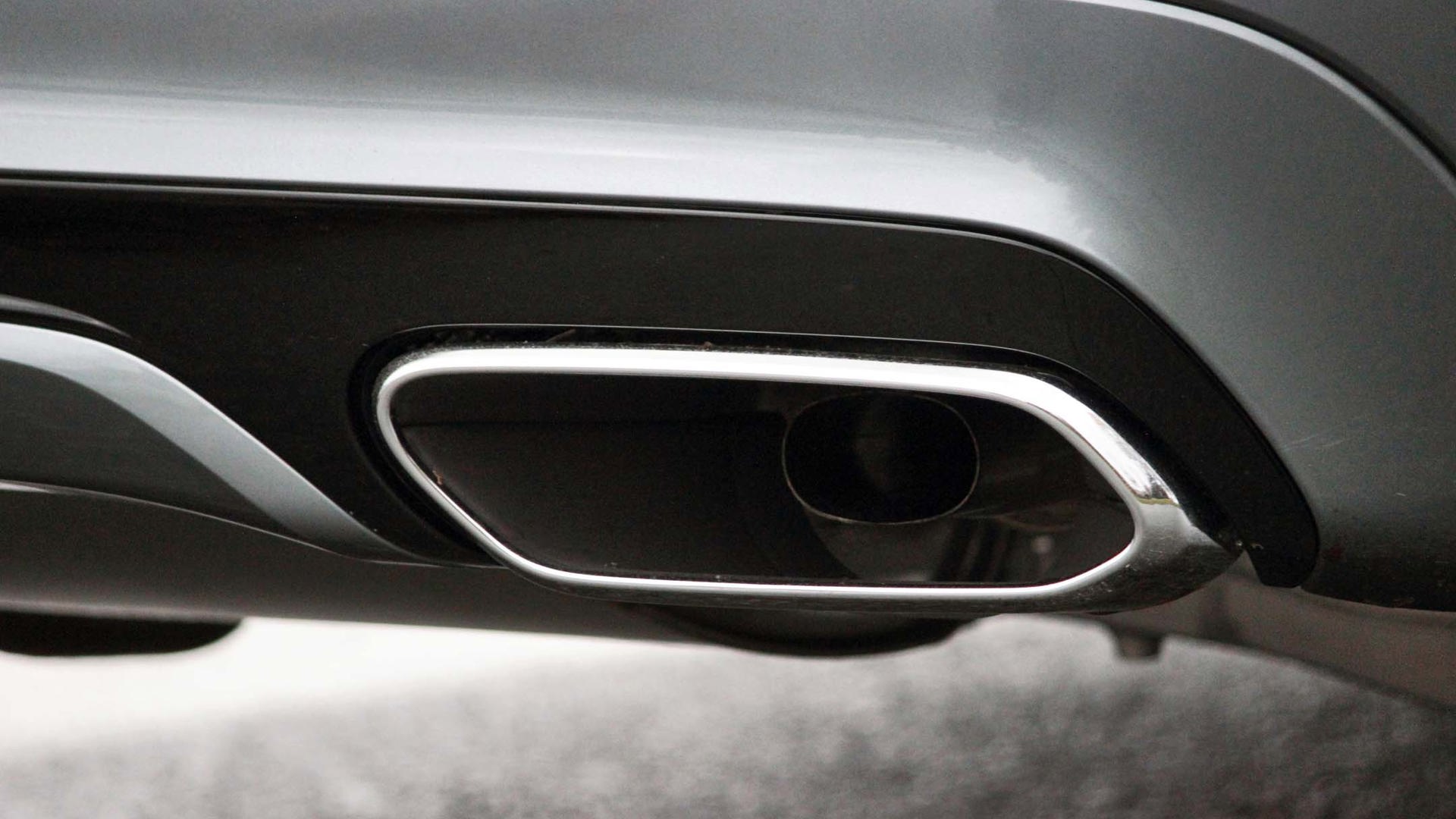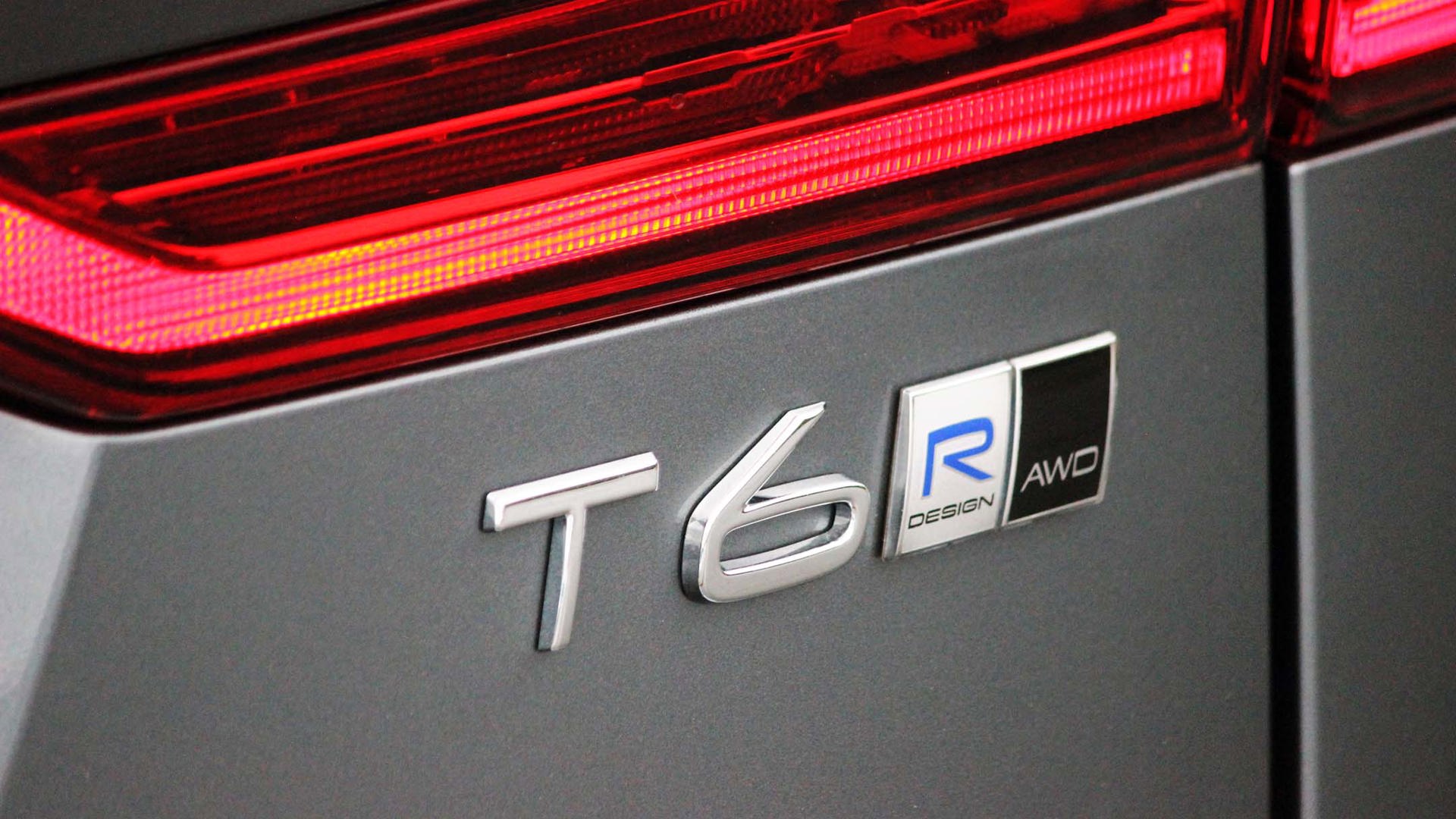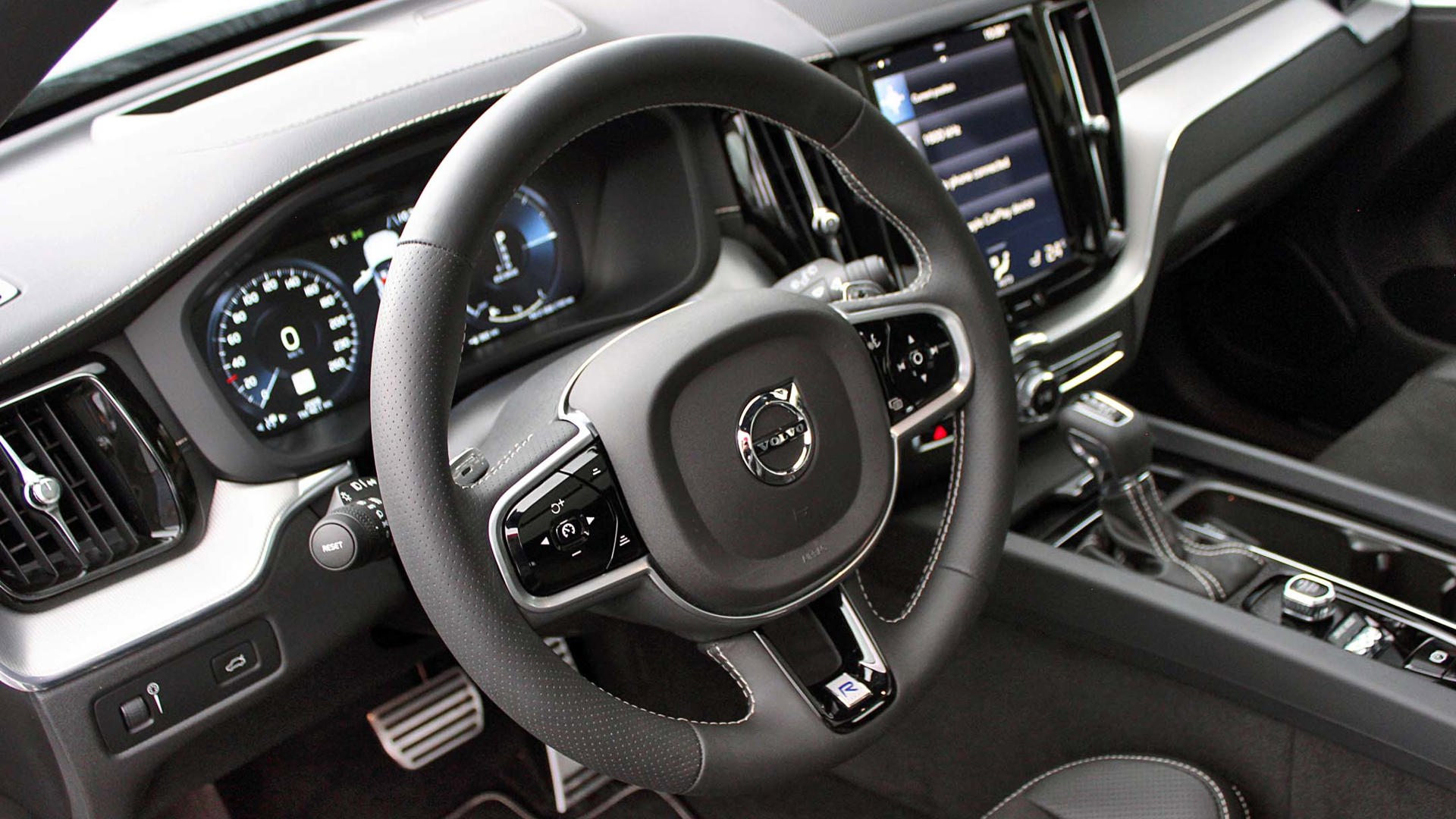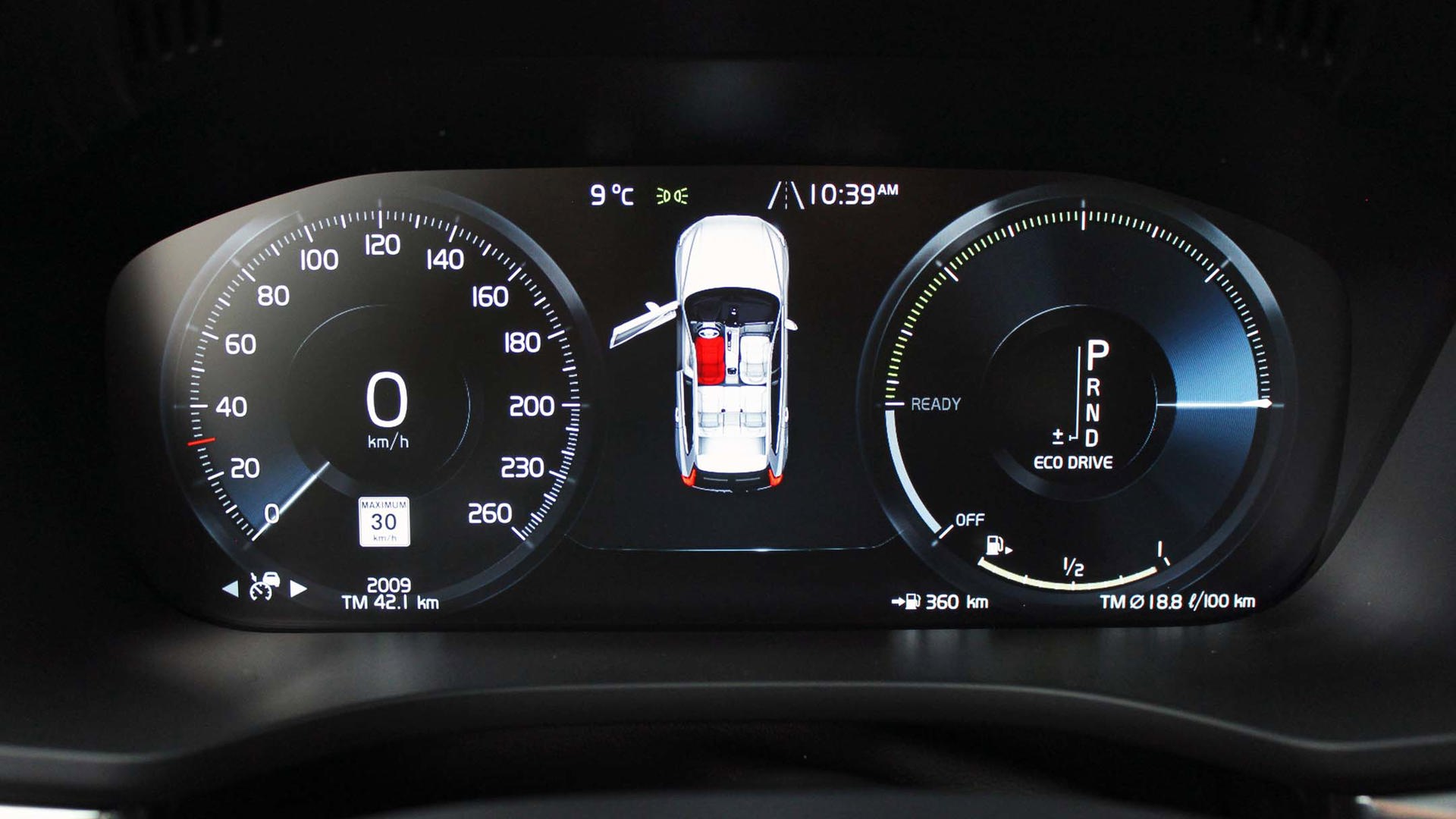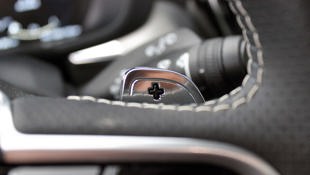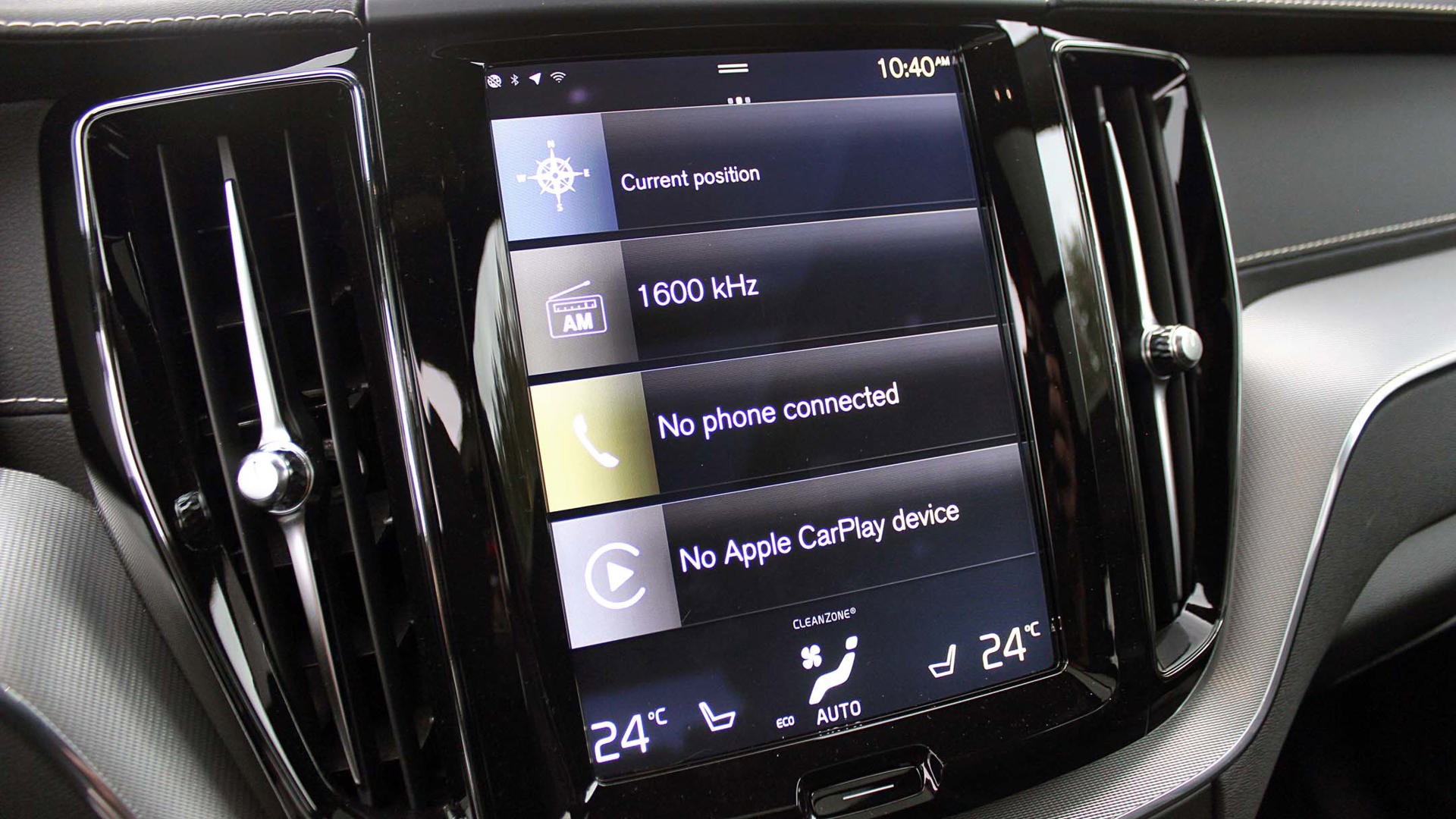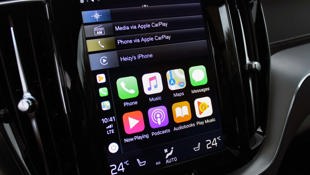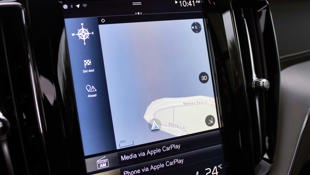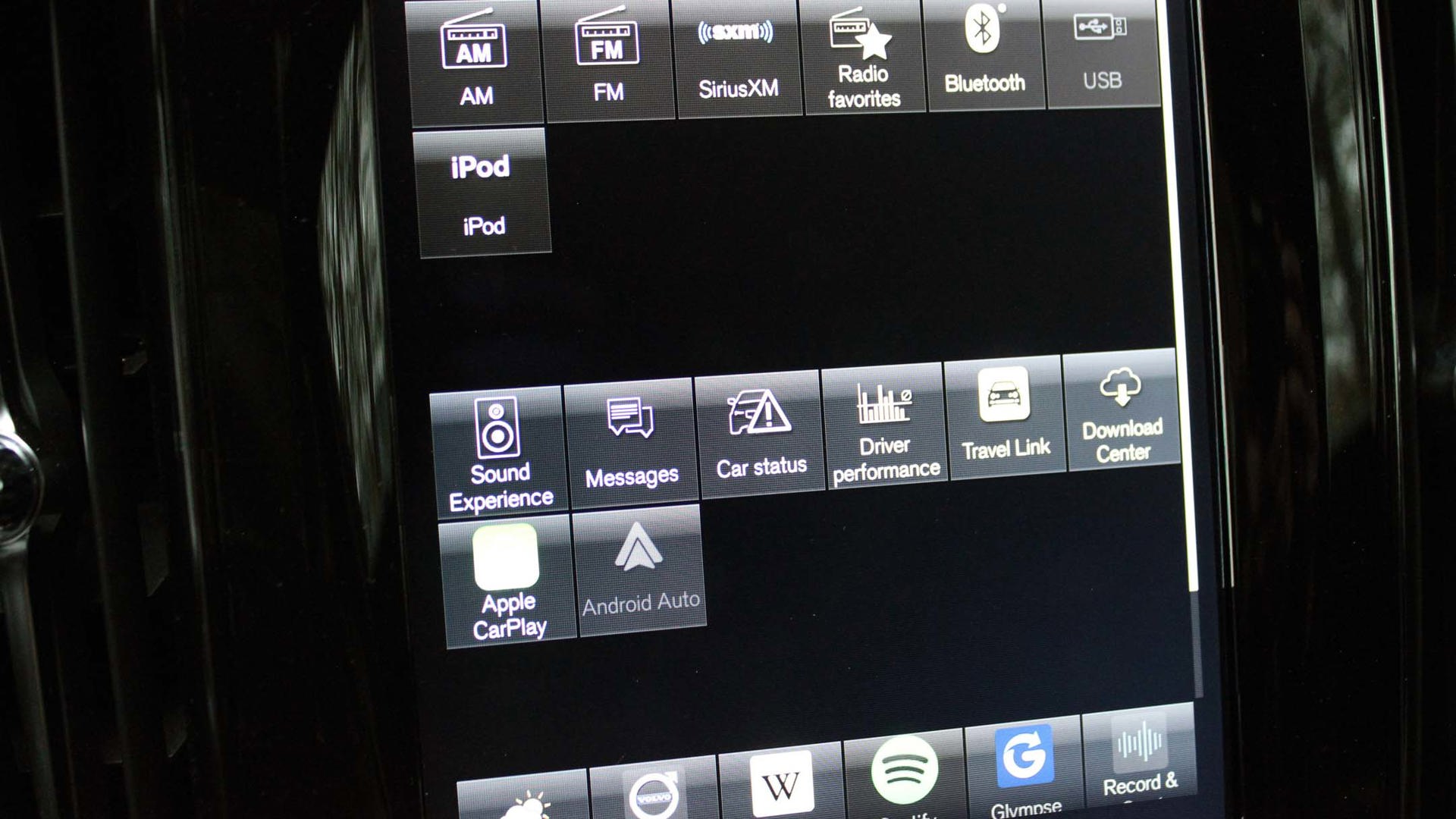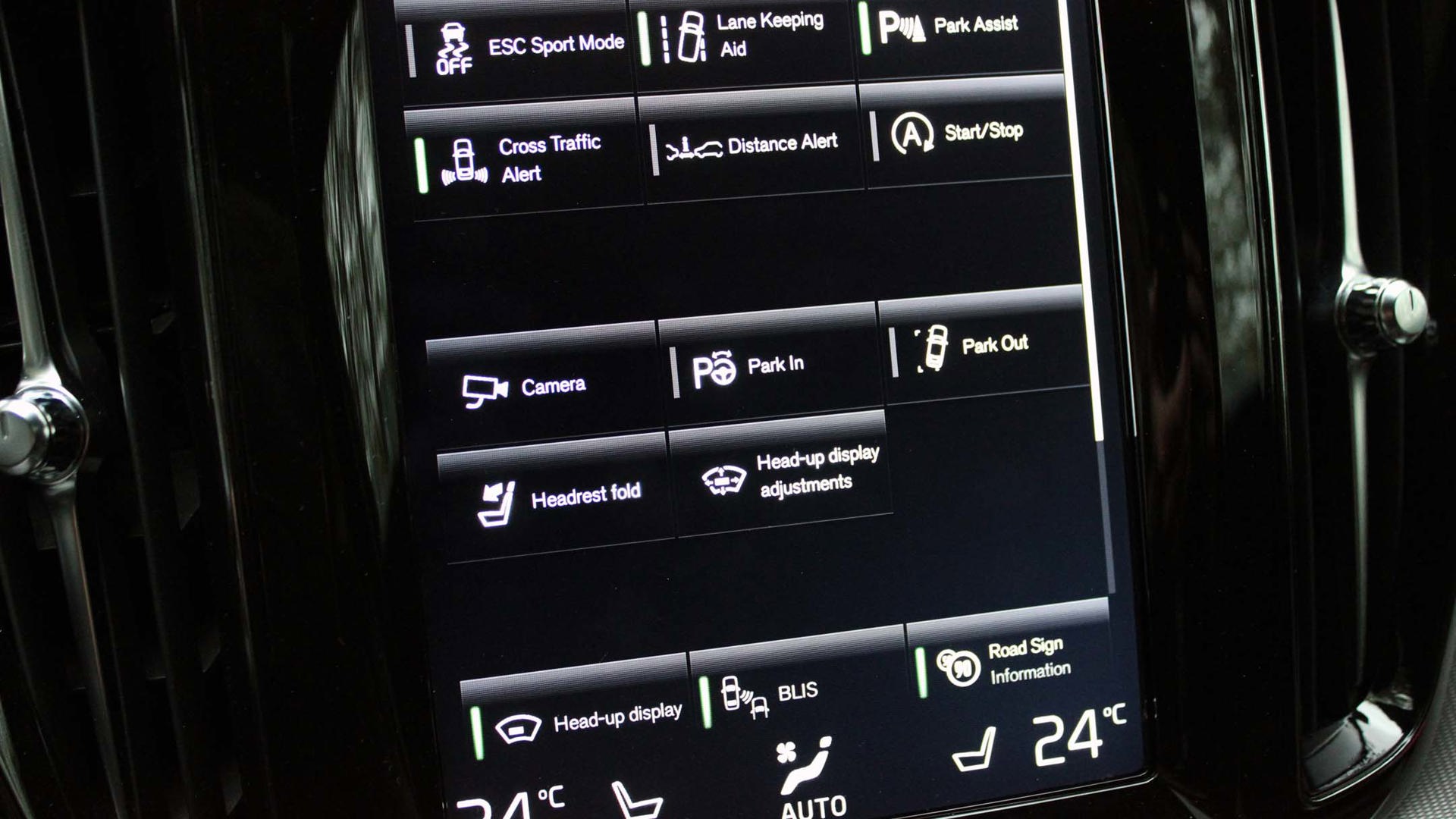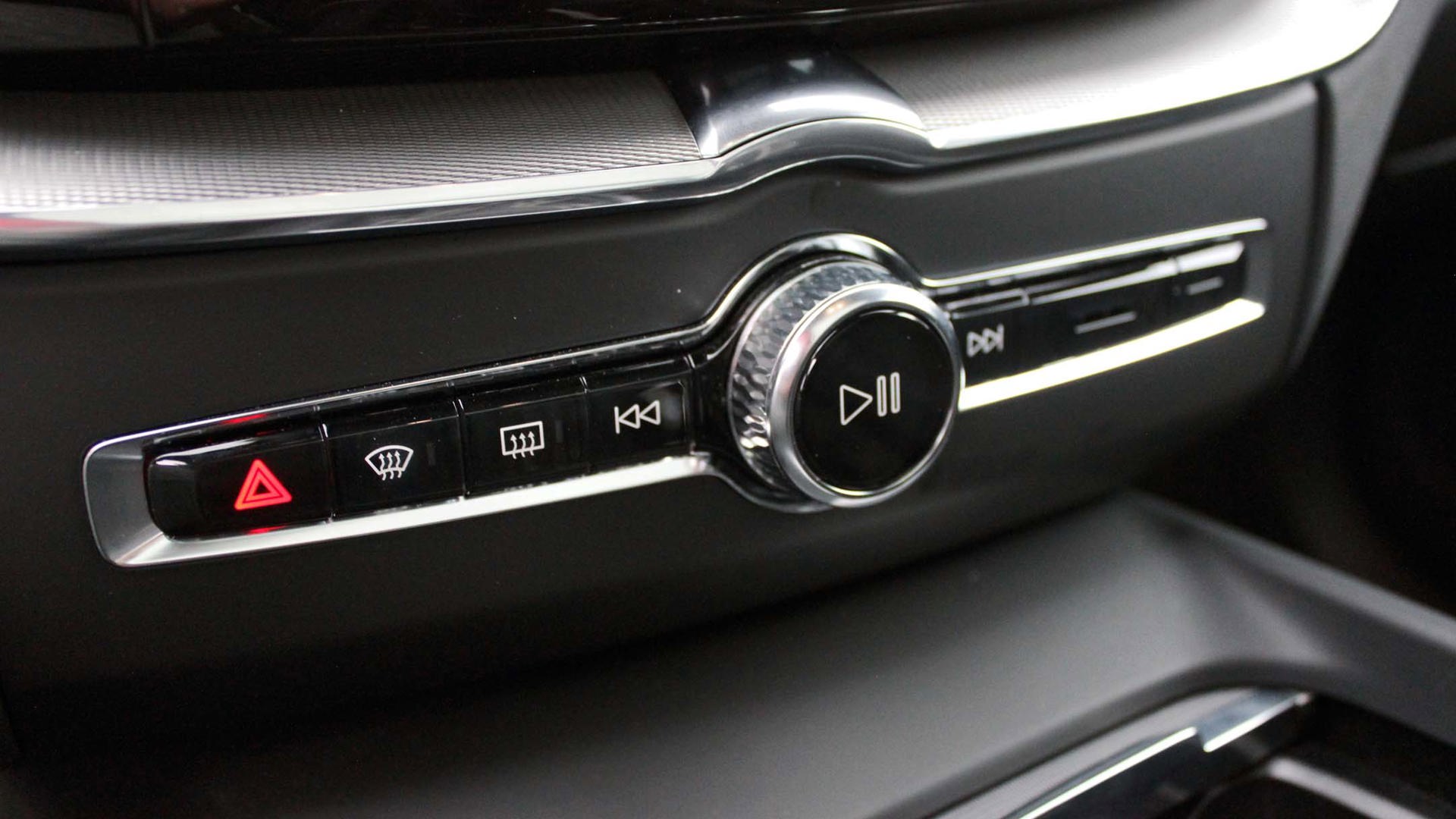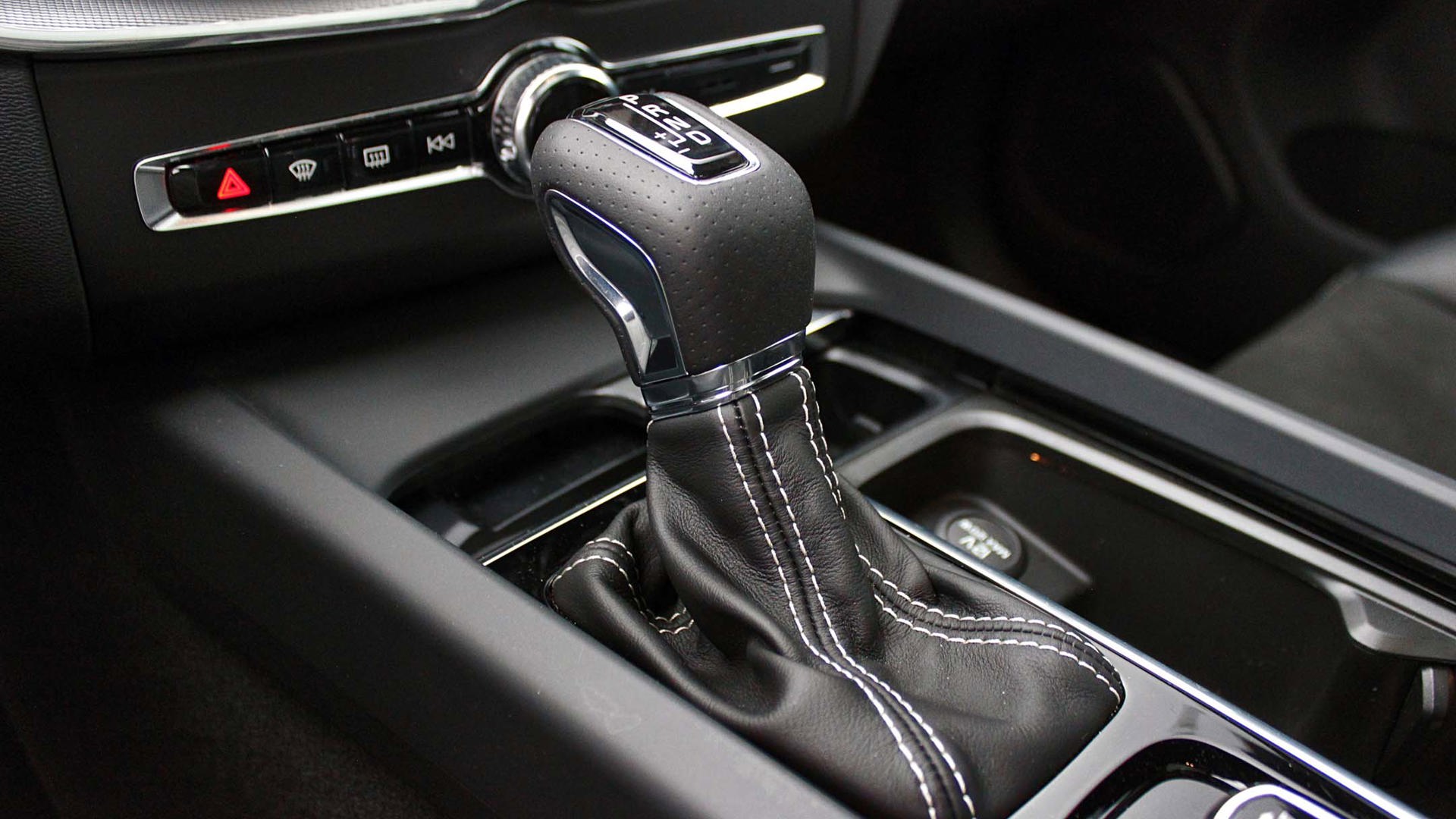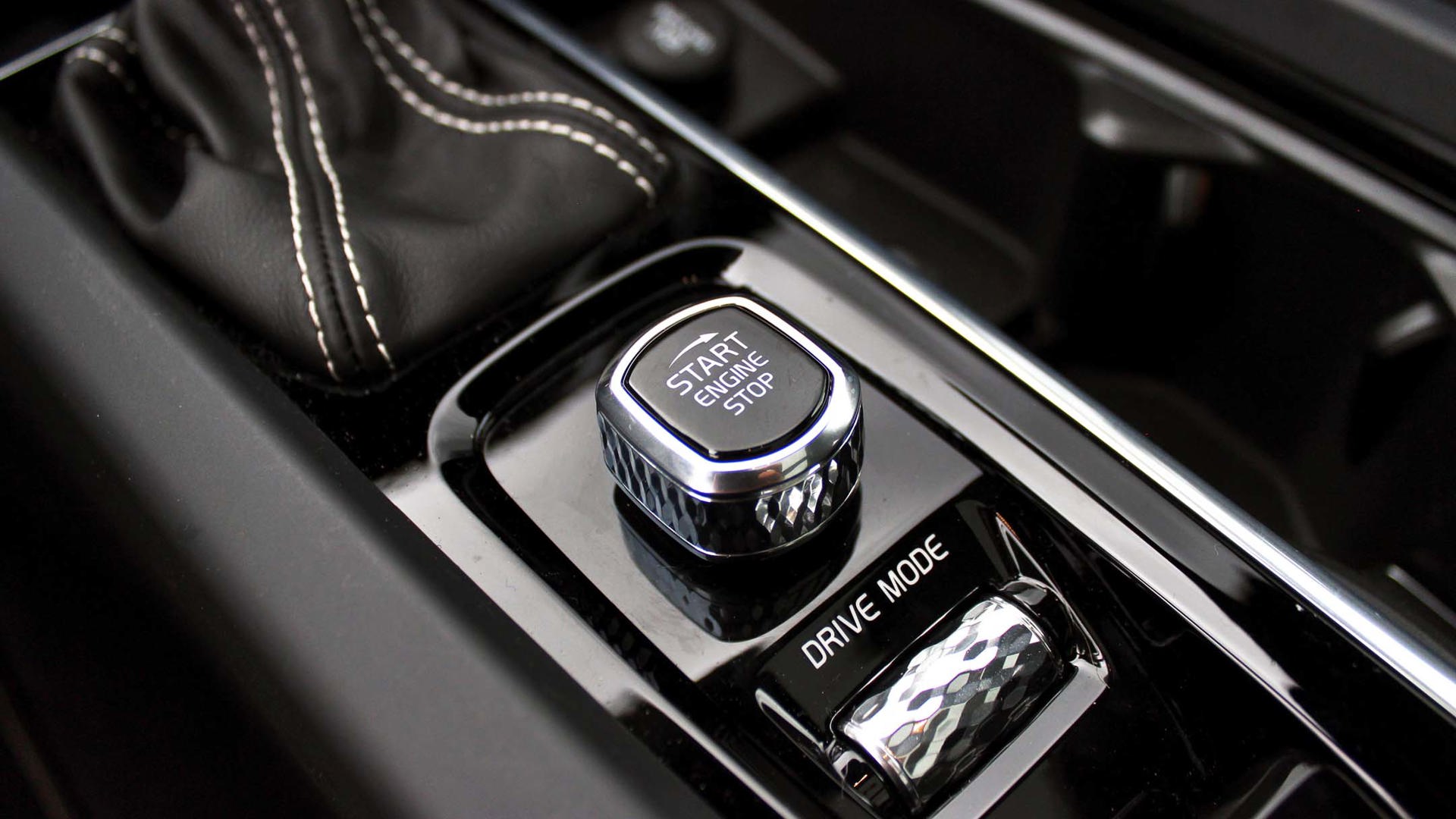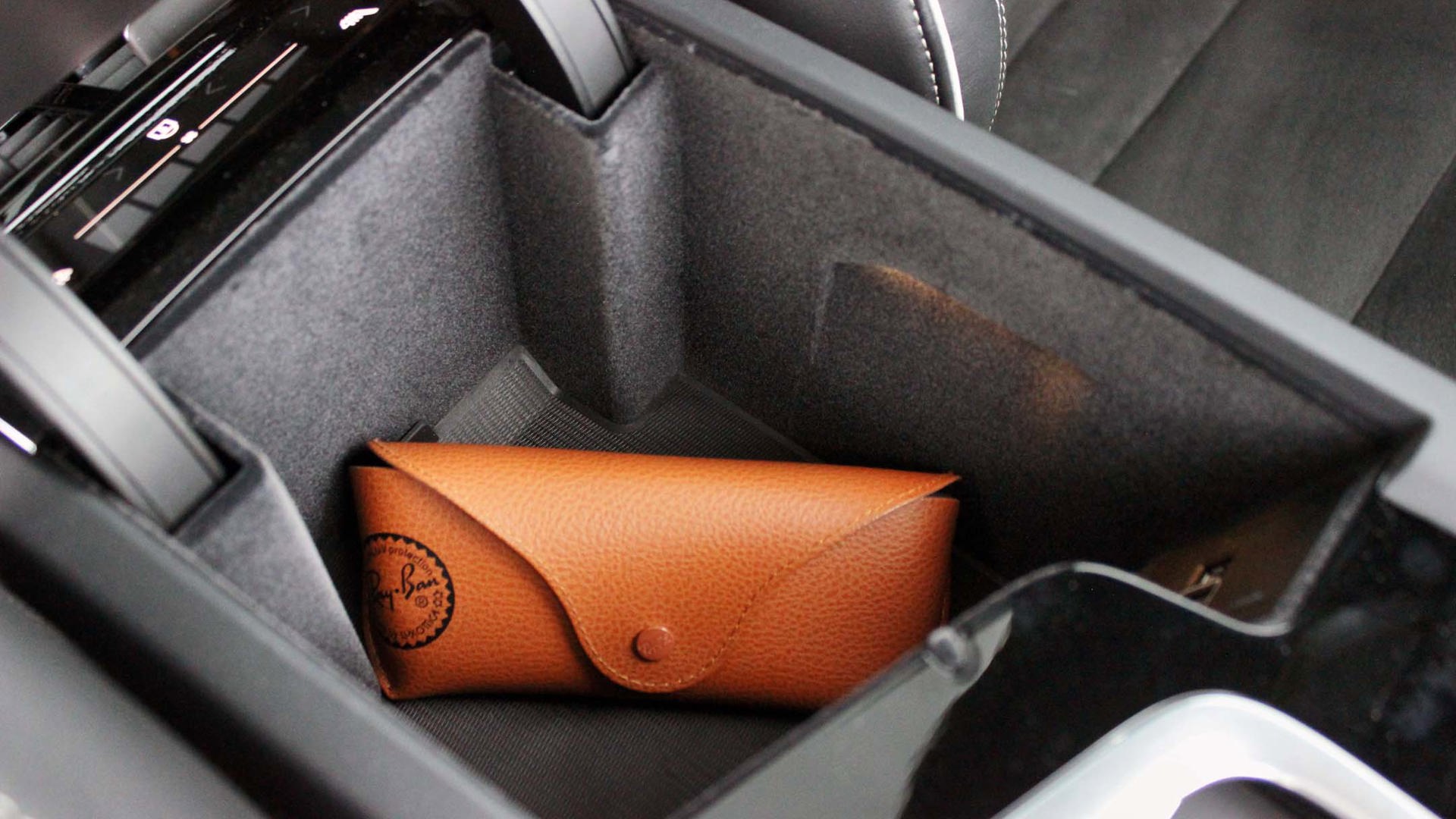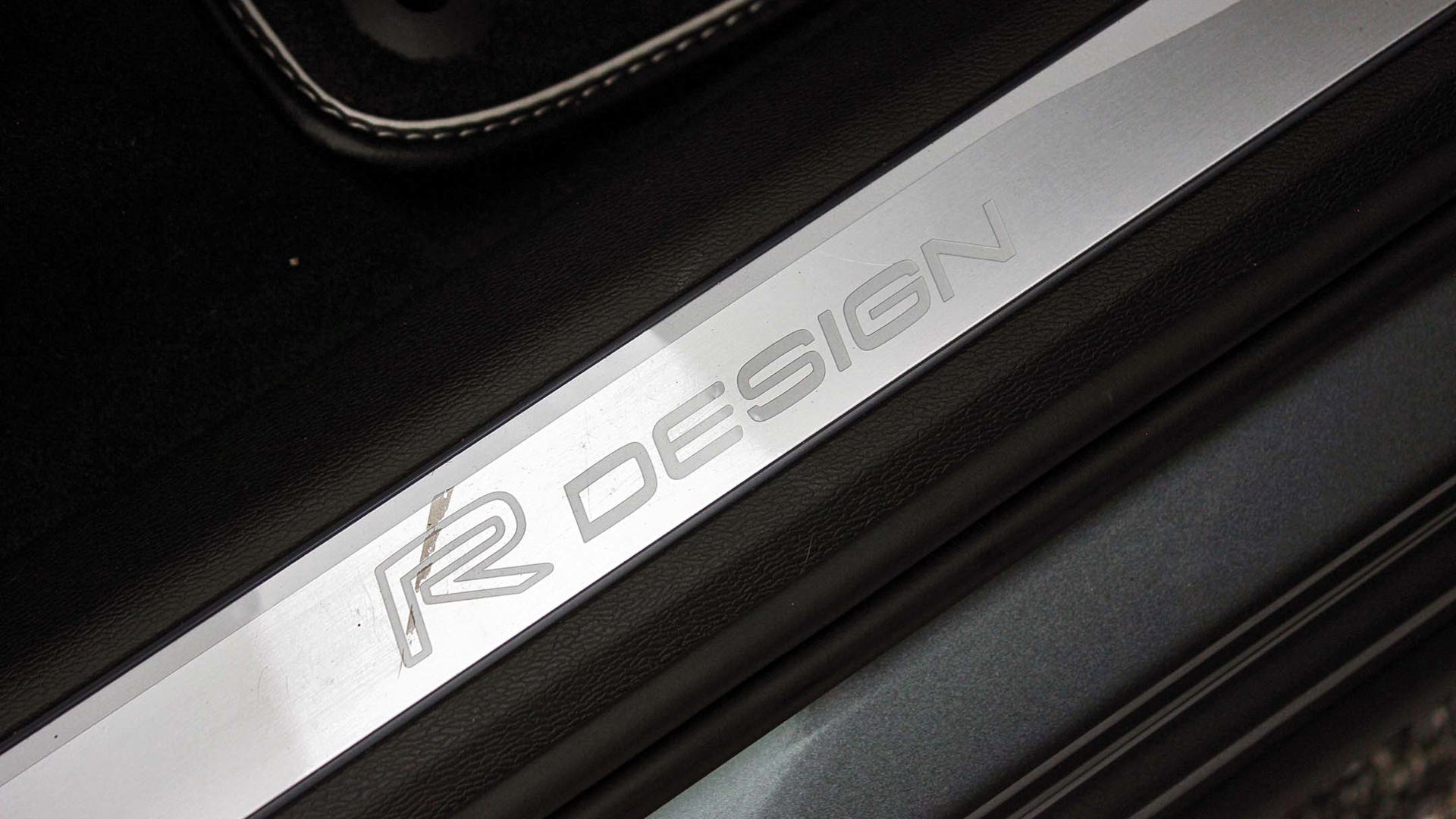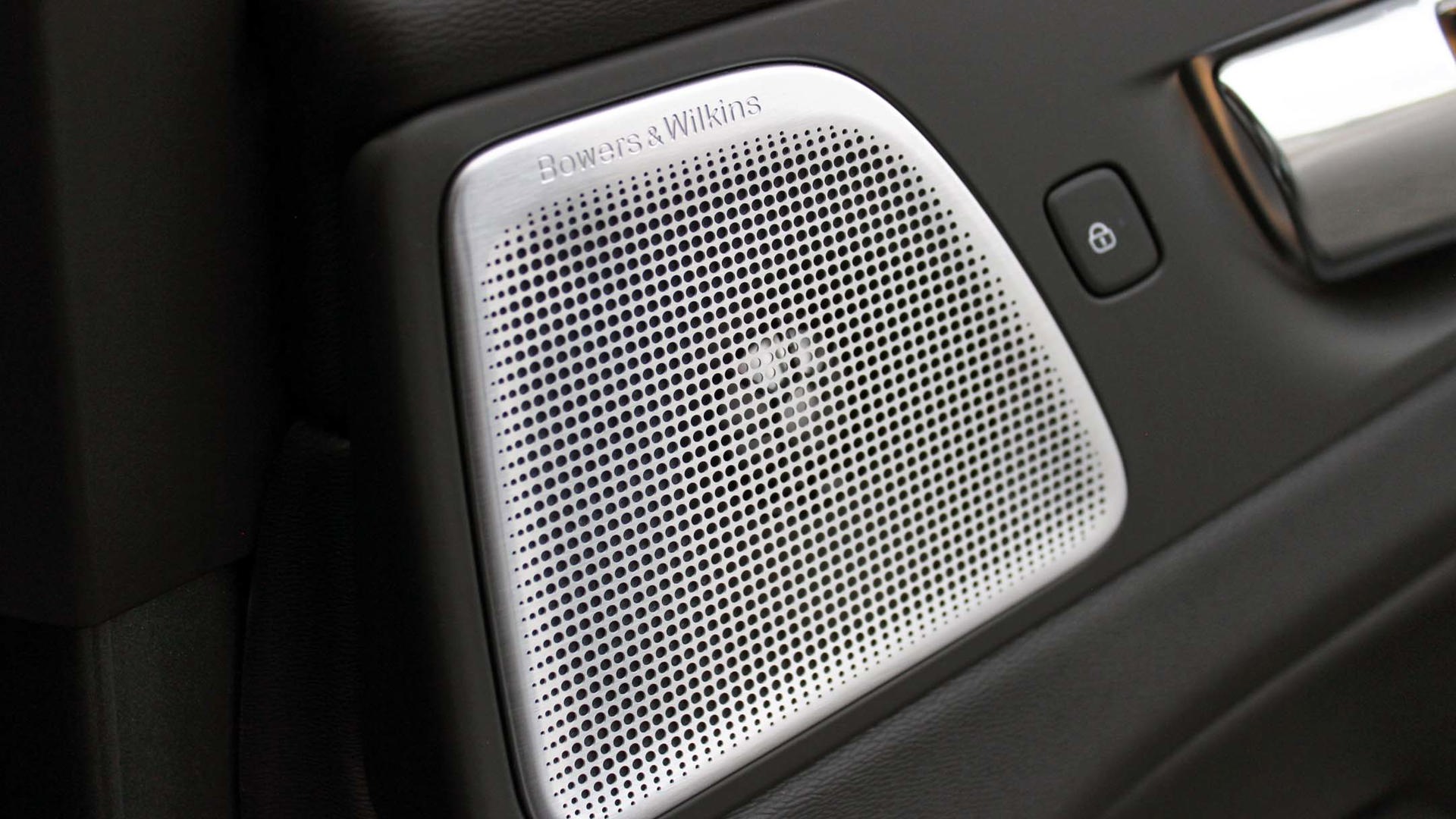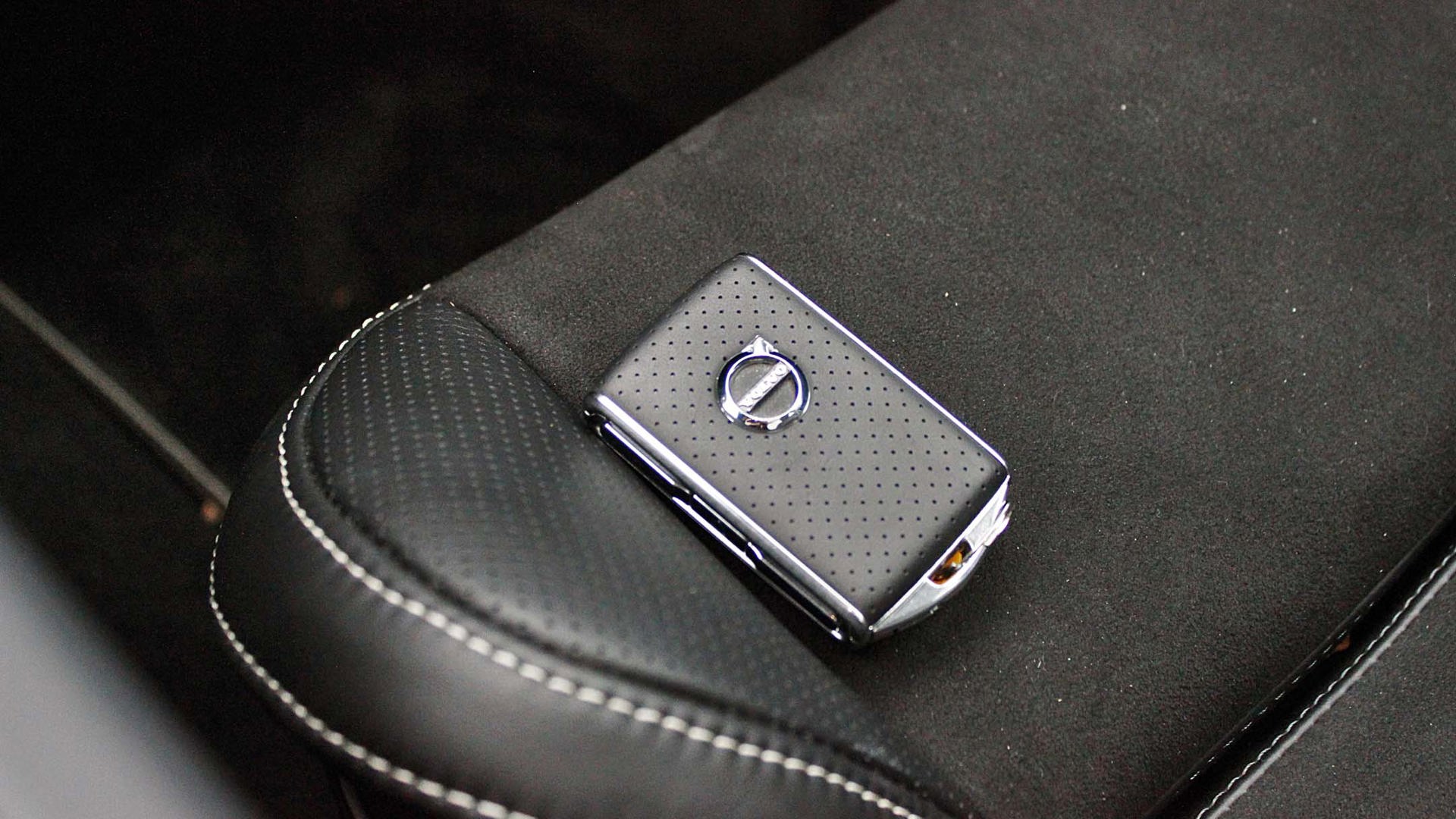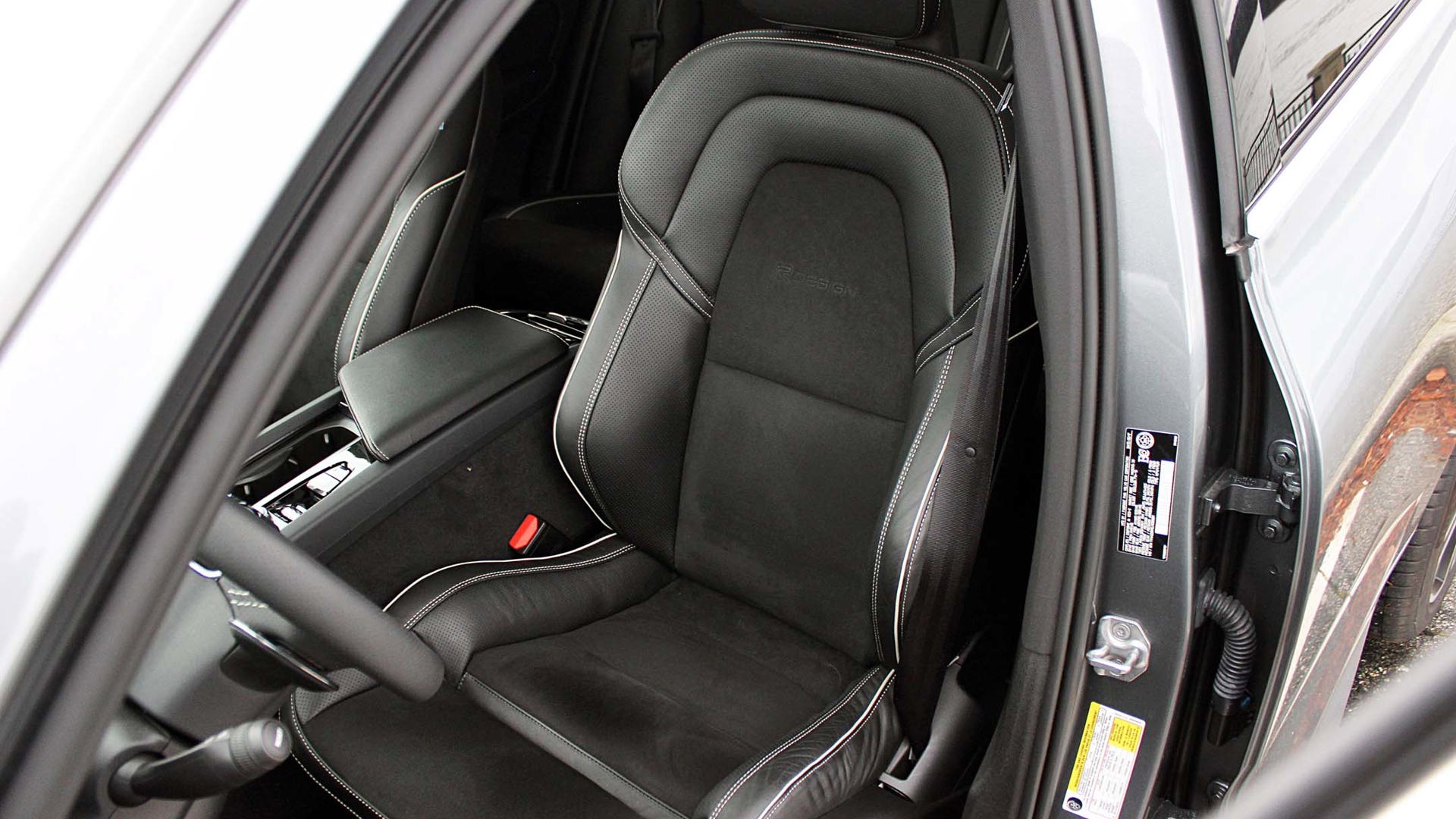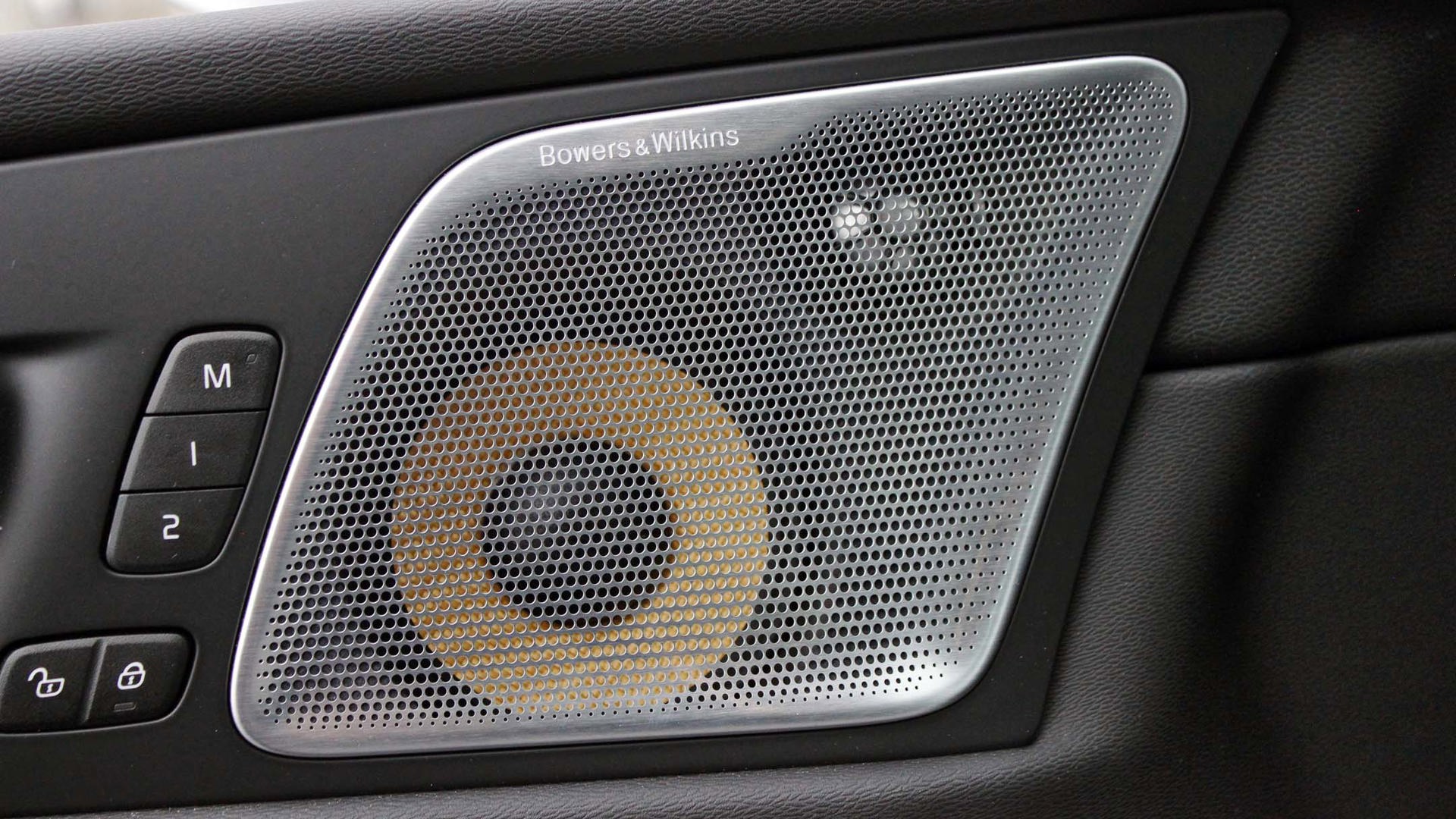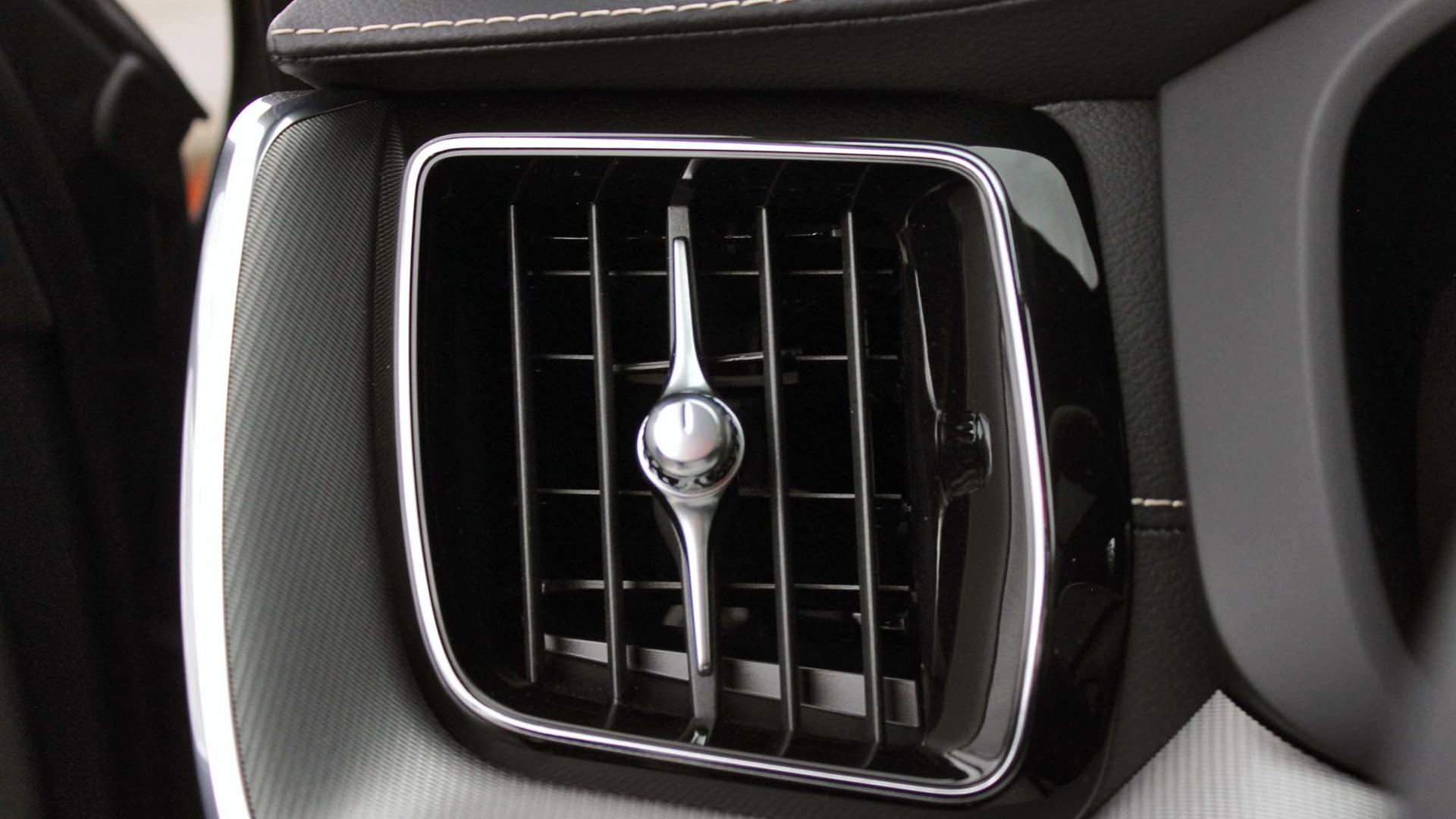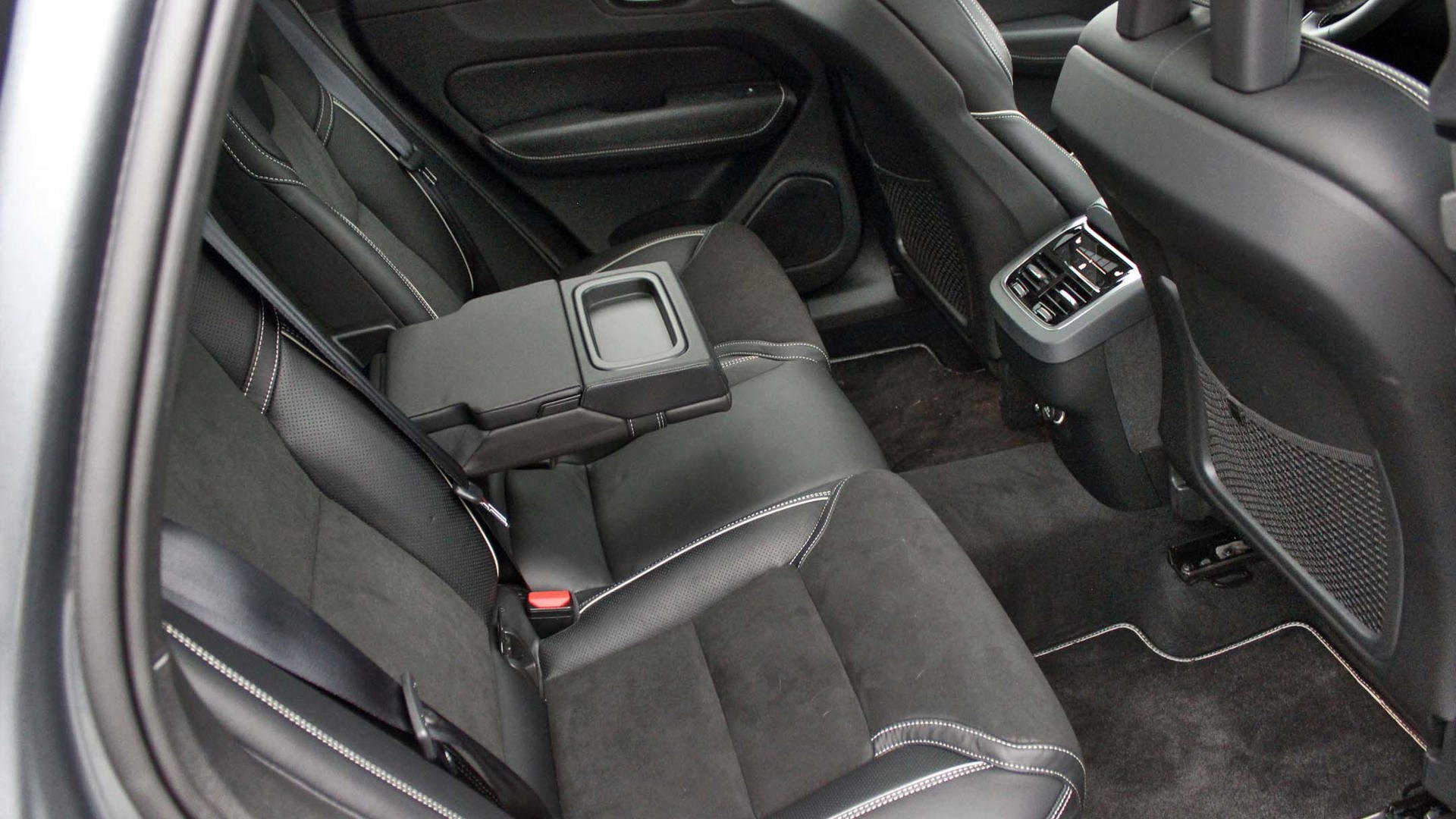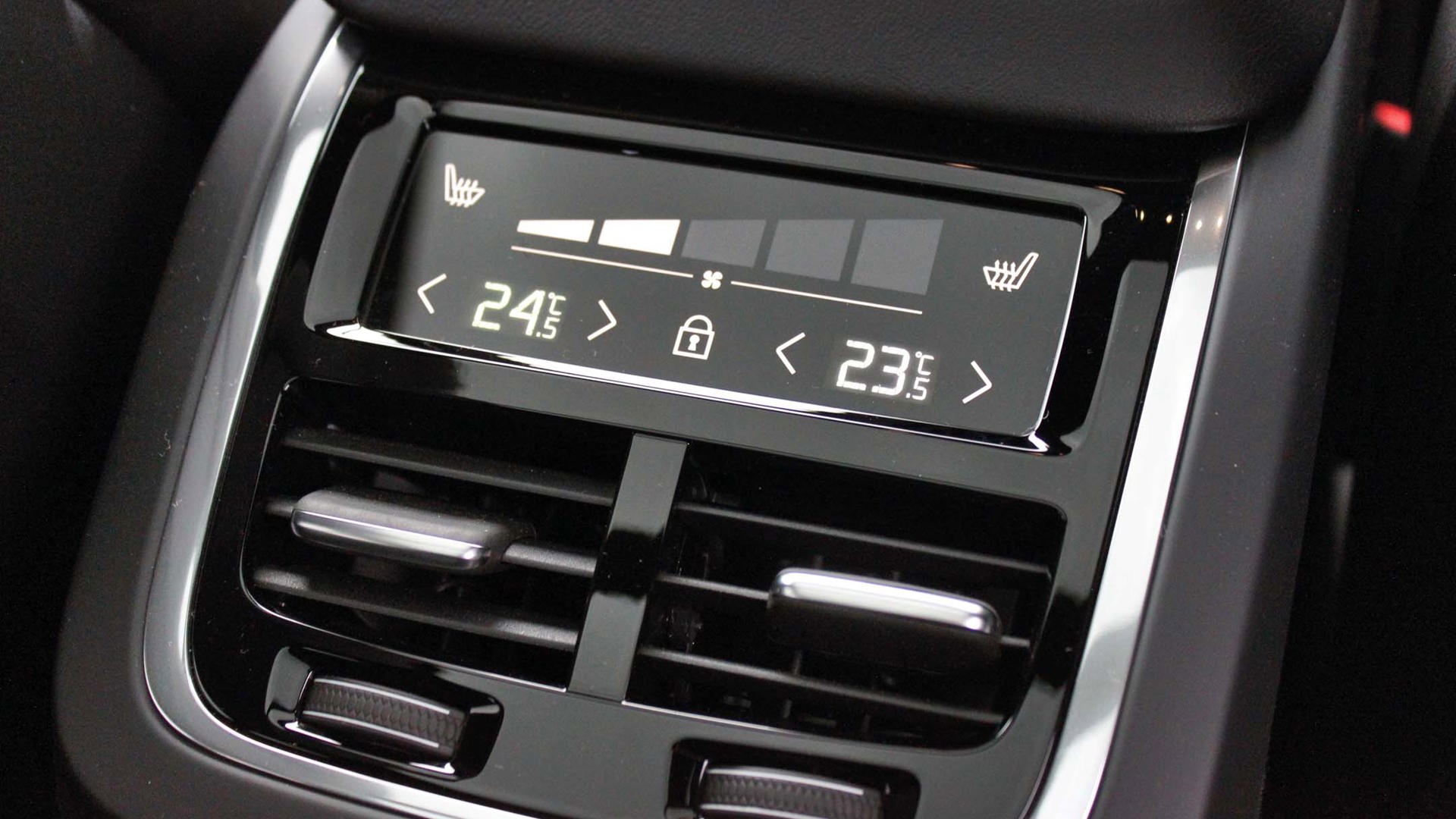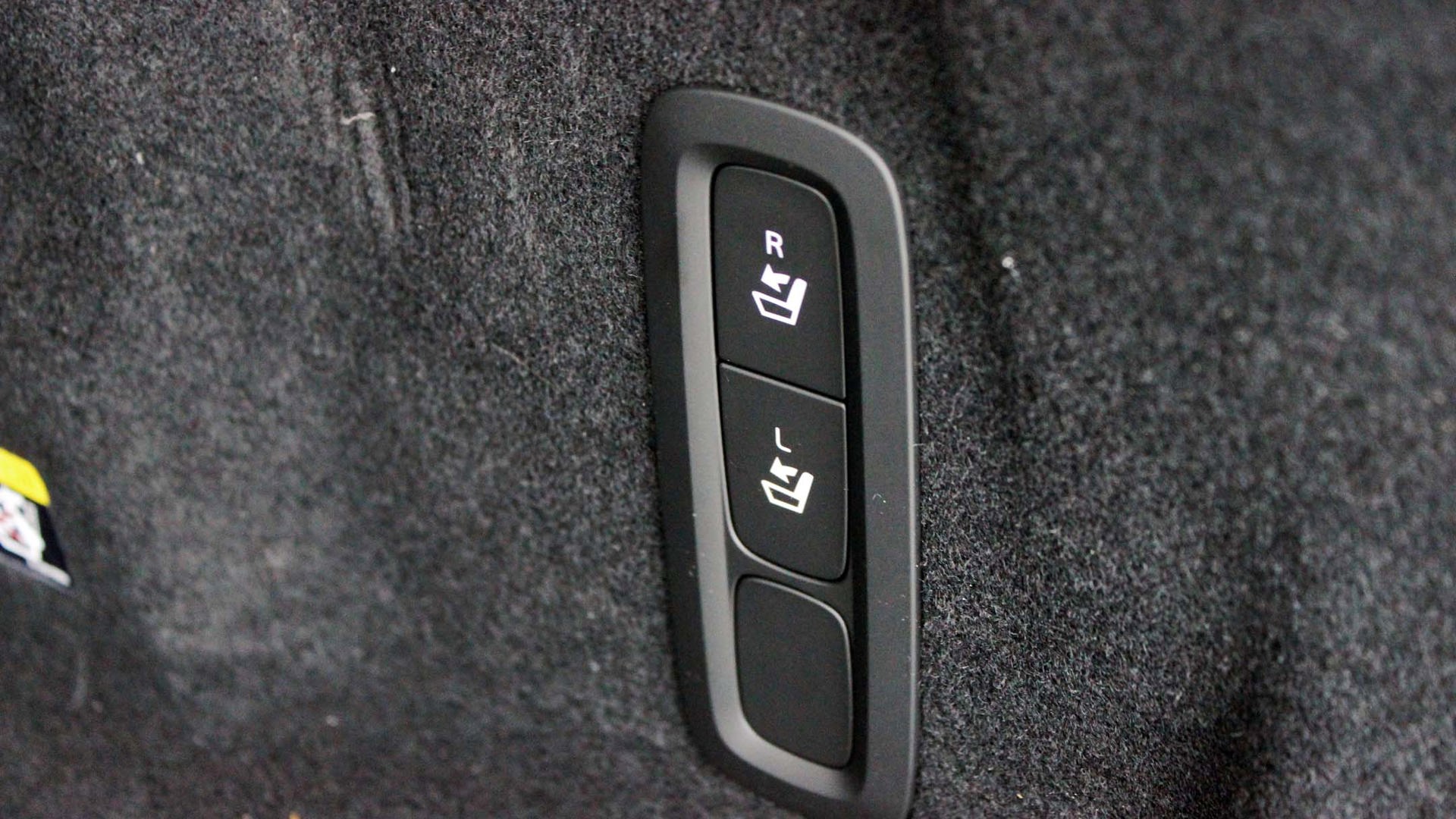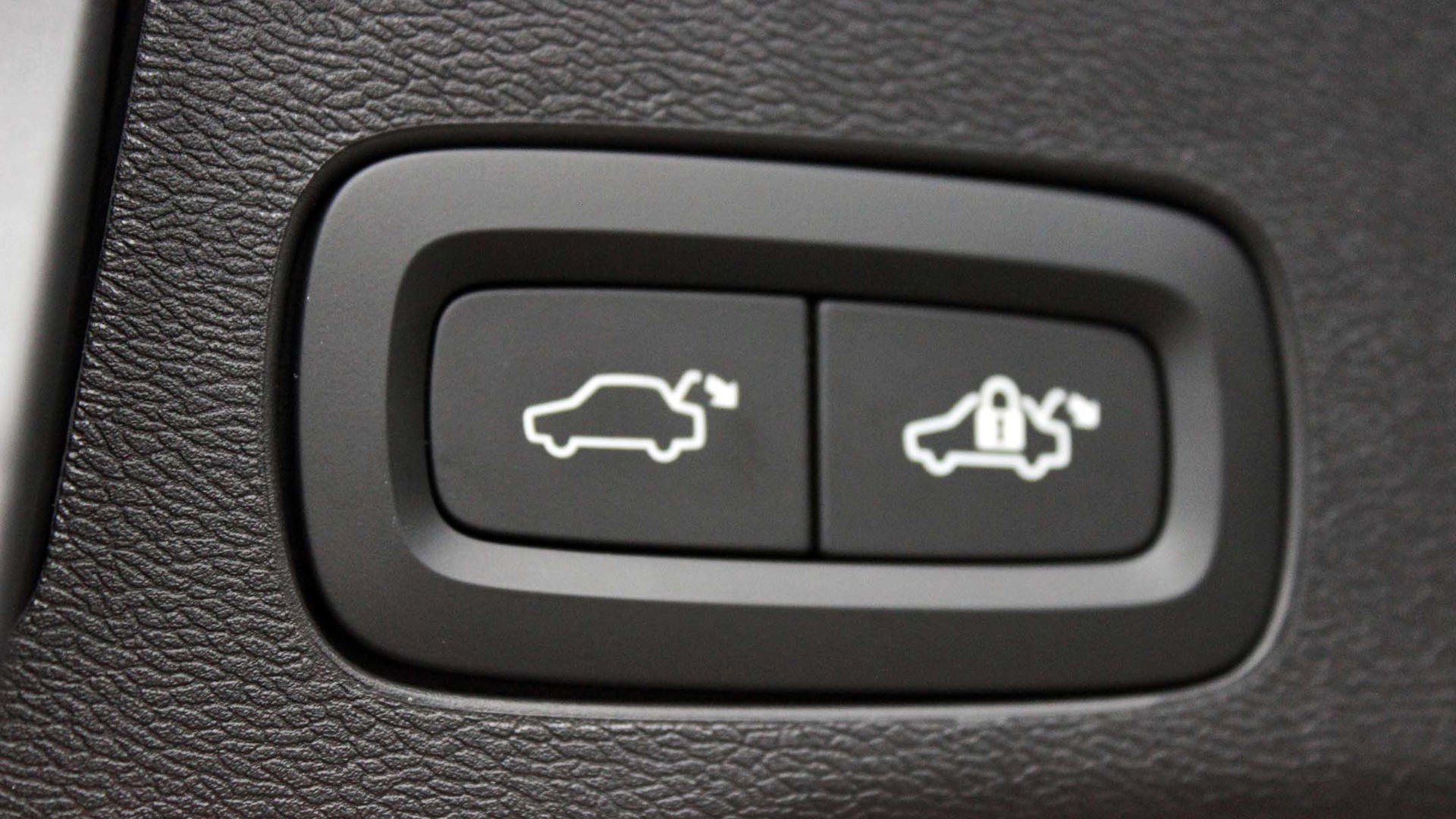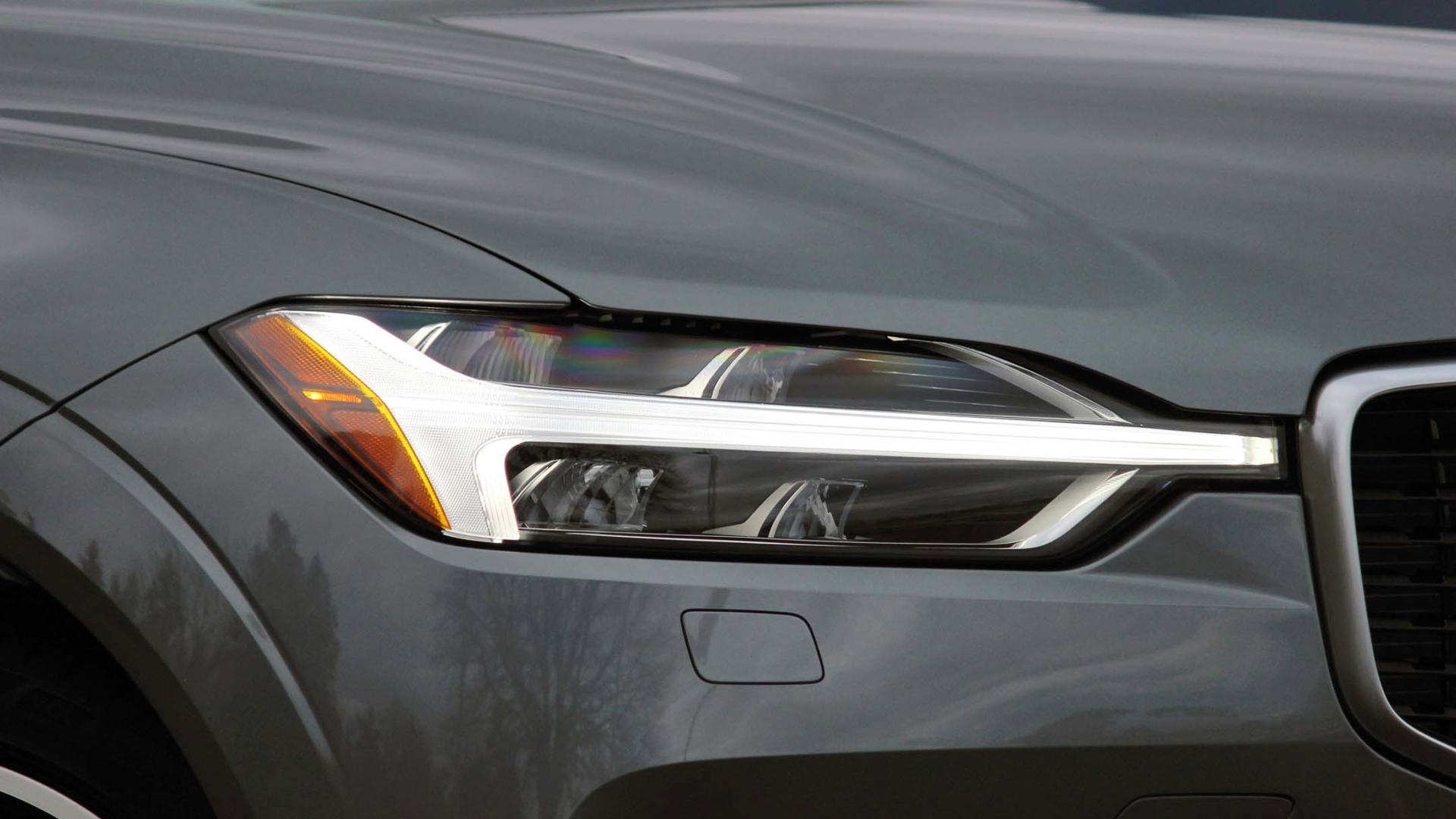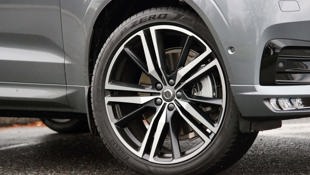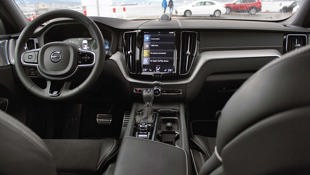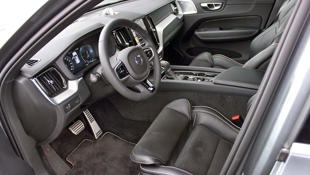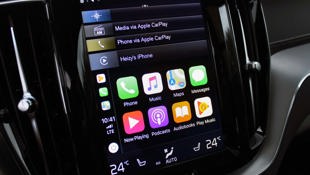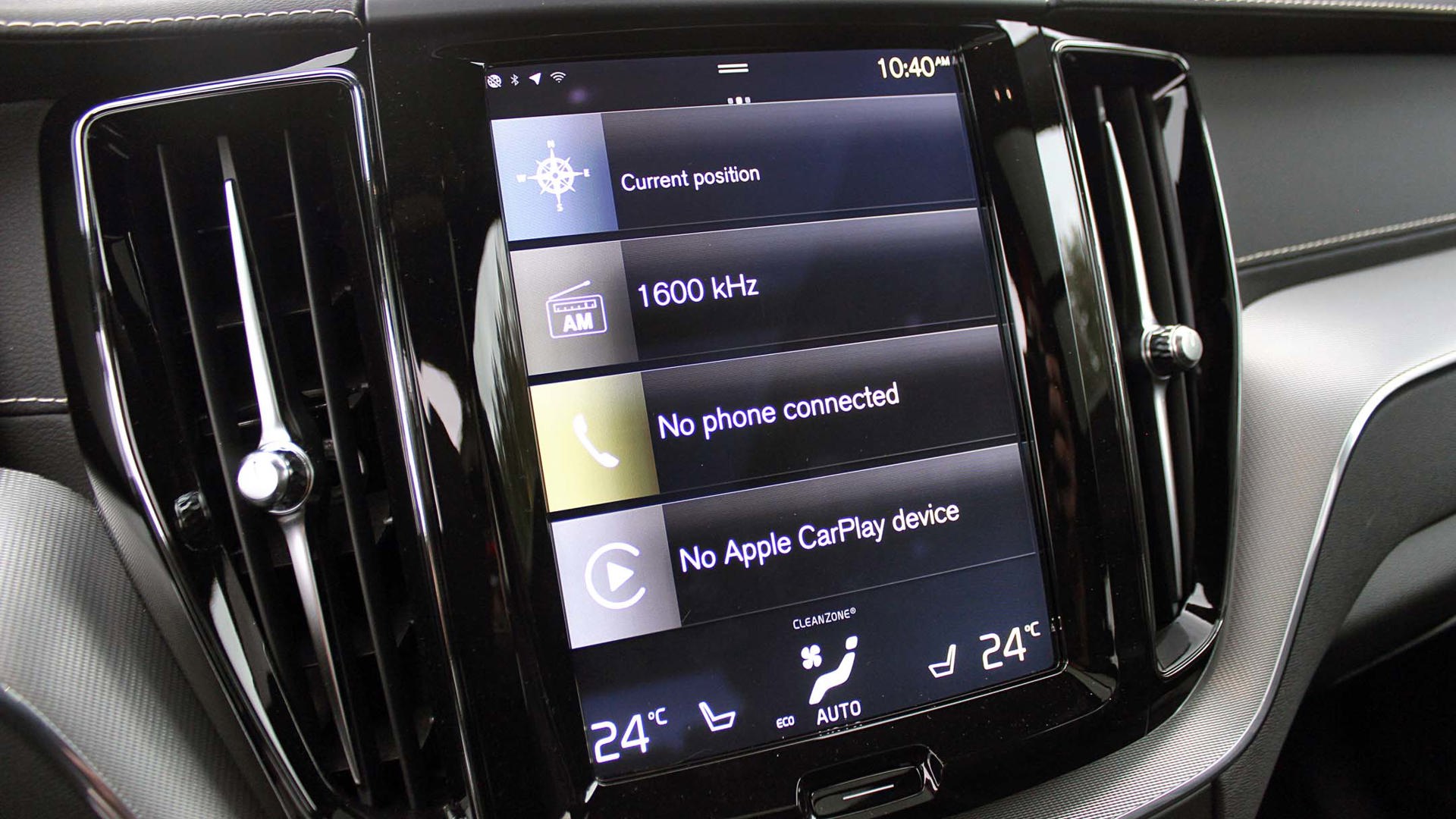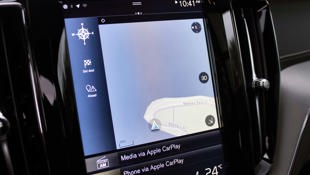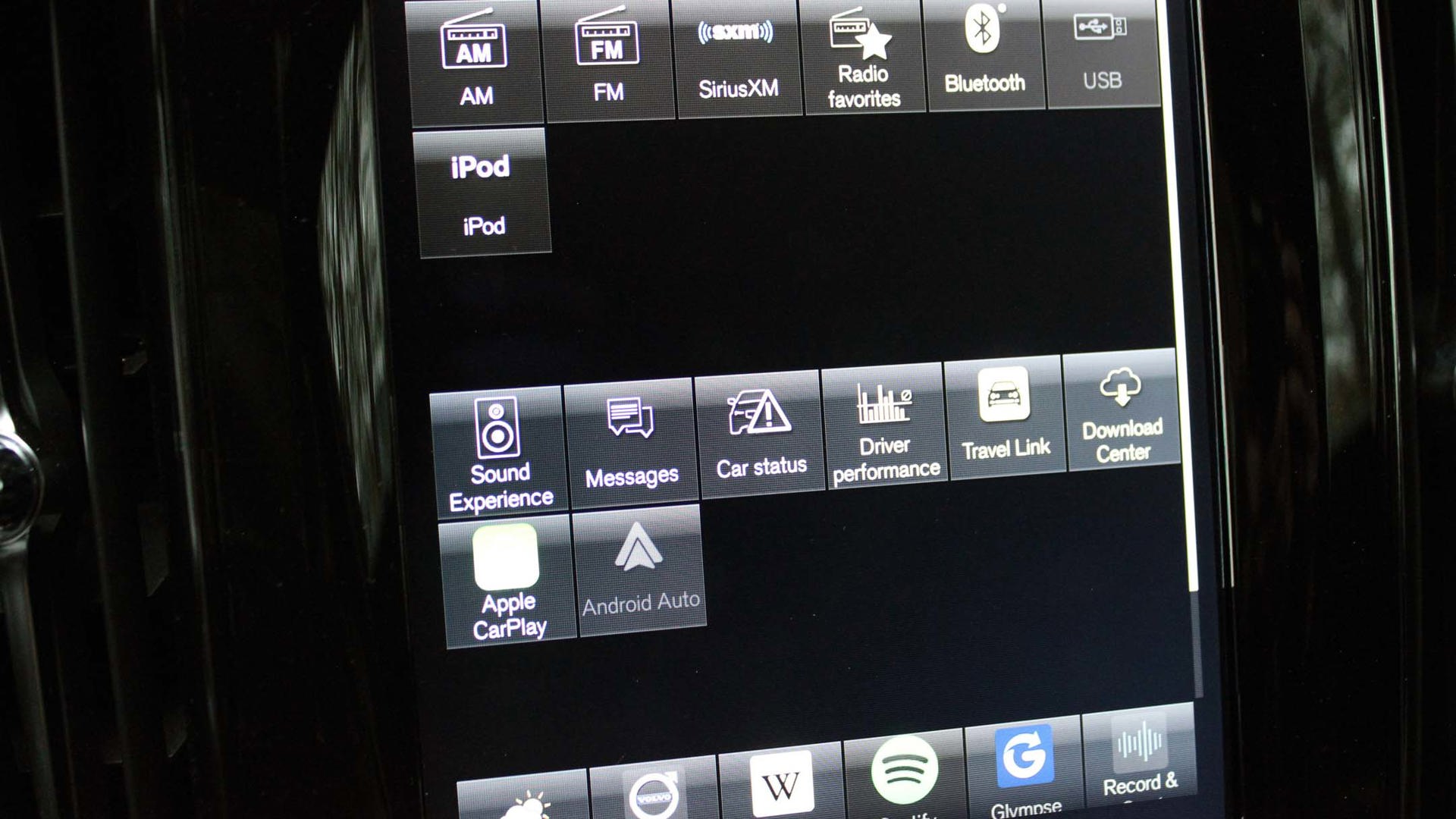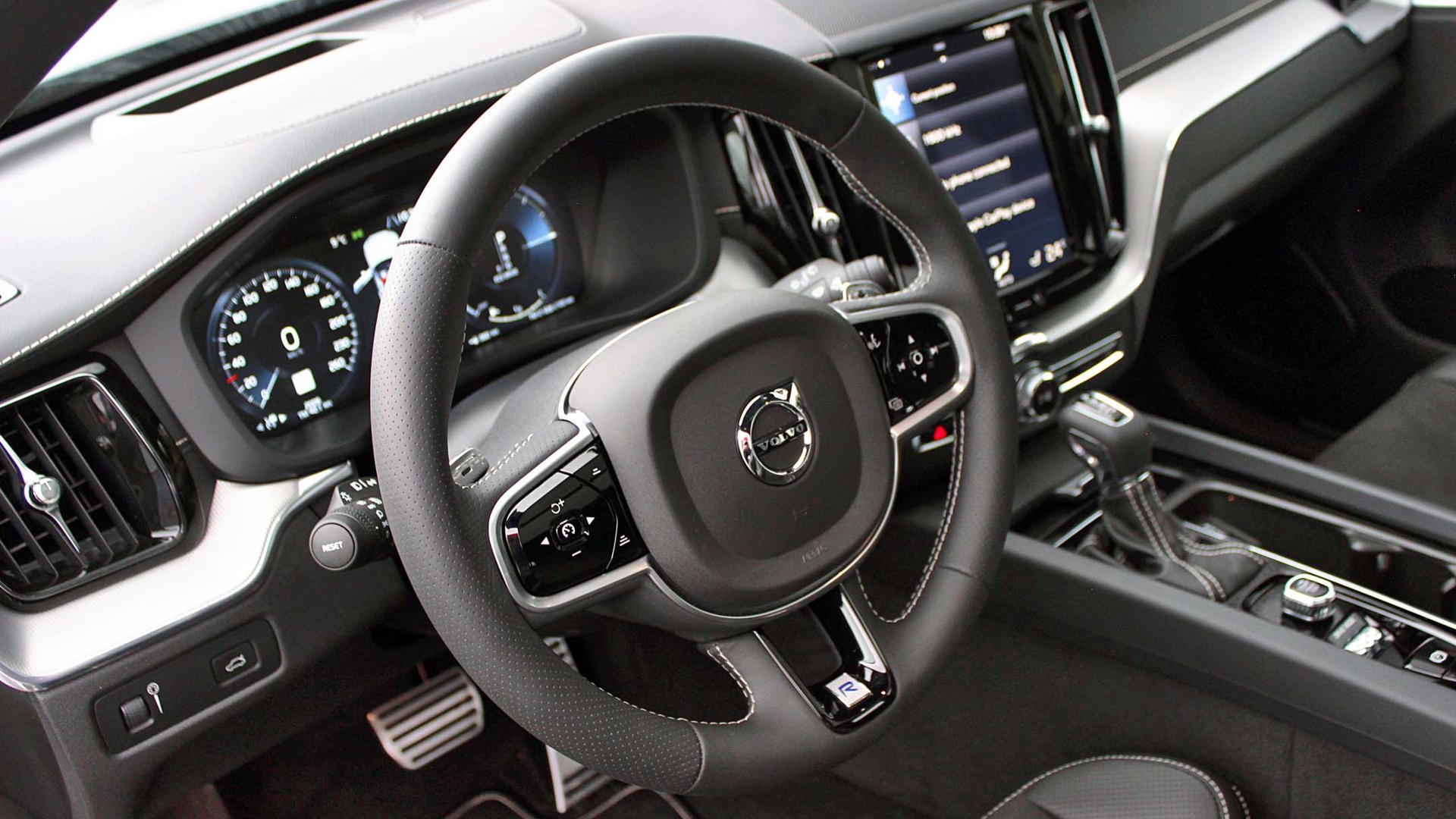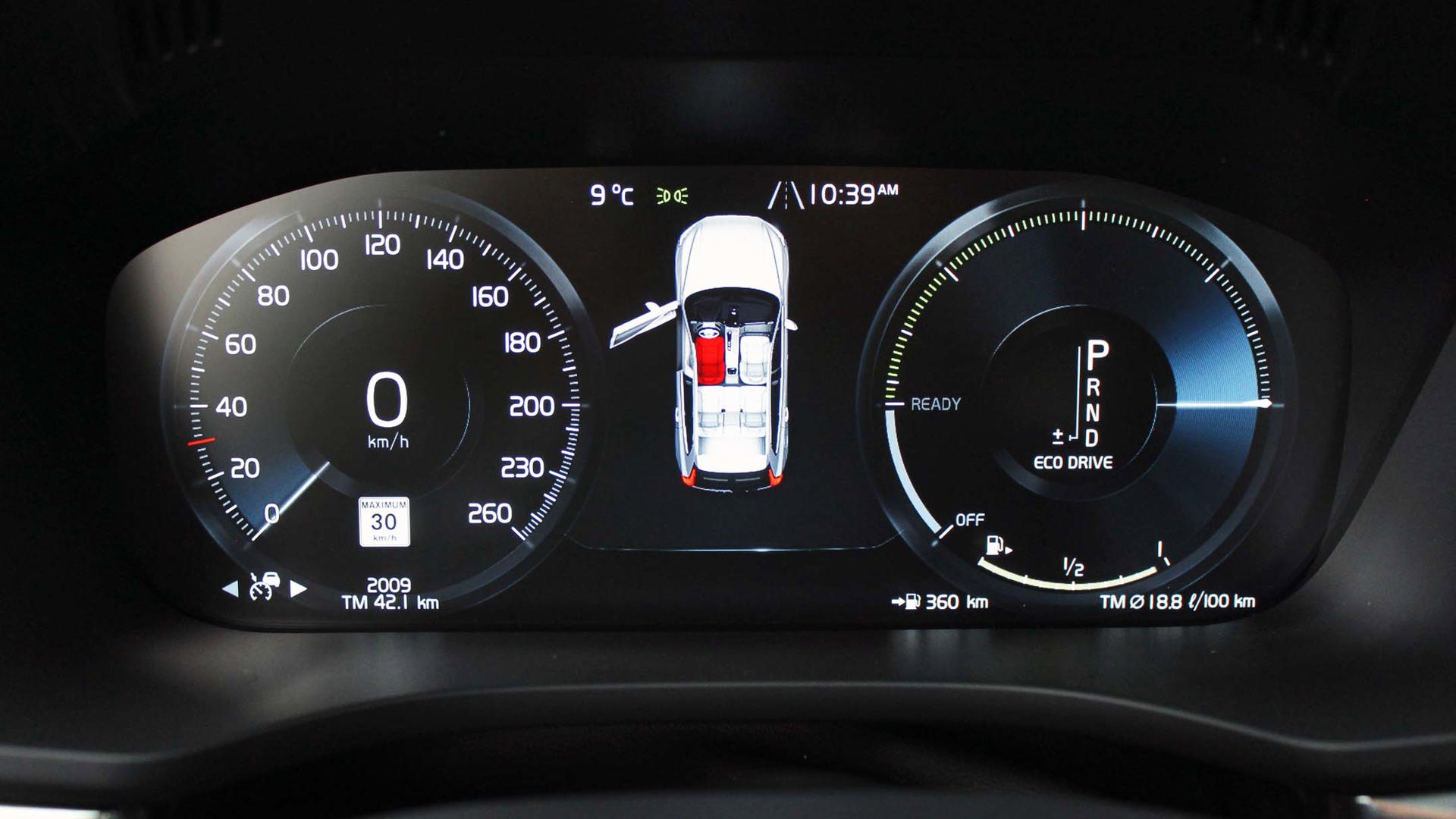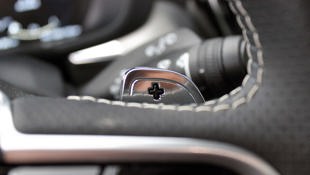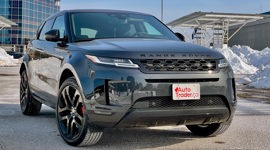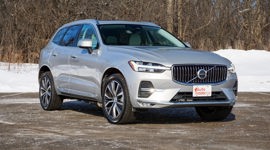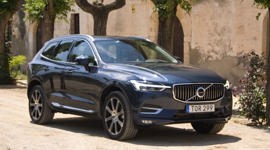 AutoTrader SCORE
AutoTrader SCORE
-
STYLING9/10
-
Safety9/10
-
PRACTICALITY8/10
-
USER-FRIENDLINESS8/10
-
FEATURES7/10
-
POWER9/10
-
COMFORT8/10
-
DRIVING FEEL7/10
-
FUEL ECONOMY7/10
-
VALUE8/10
When was it? When was this crazy, spectacular, and wholly unexpected shift in the automotive landscape, when all of a sudden Volvo – one of the most sensible, traditionally styled, and altogether oatmeal car brands out there – became one of the guiding lights of that selfsame landscape in terms of style and quality?
What a gorgeous car – anybody who tells you that all crossovers look the same need to spend some time with the XC60.
I guess you could say it was when the XC90 SUV was released for the 2015 model year (and started winning awards not long after that), riding on an all-new platform set to underpin many other Volvos after it (including the XC60 you see here), and looking altogether unlike any Volvo before it. You could say that, but if you dig a little deeper, Volvo – long-time builder of sensible sedans and wagons – has been slowly changing their image; it’s just that they didn’t always have the guts (or the pricing) to match the competition.
Take the ’06–’13 C30 compact hatch, for example. Easily one of the prettiest Volvos built under Ford stewardship, it never quite had what it took to shake the brand’s family wagon image, to appeal to a younger crowd, and to compete with the likes of the Volkswagen GTI. It came so close, though! Quirky inline-five engine, great styling, motorsport success – there was even a limited-run Polestar performance version. By 2013, though, just like the 340 and 480 before it, it was gone and it was back to wagons and SUVs.
Which, of course, is what you’re looking at here – the 2018 Volvo XC60. It’s a crossover, yes, but as is Volvo’s wont these days, it represents one of the best-looking entrants in the segment and is about as far removed from those old 240 sedans and wagons you can get.
As is Volvo’s signature of late, the XC60’s front fascia is dominated by the “Thor’s Hammer” headlights, used to describe the LED daytime running lights that recall the famous Norse god’s/Marvel character’s weapon of choice. The blacked-out grille on my R-Design model provides a nice anchor between the headlights, and the more aggressive front splitter finishes it all off with a flourish. R-Design also adds special 19-inch wheels (my car’s 21s are a $1,000 option) and silver-painted wing mirrors, though the latter is a little tough to see against my car’s Electric Silver Metallic exterior colour. What a gorgeous car – anybody who tells you that all crossovers look the same need to spend some time with the XC60.
The aerodynamic and sultry front end gives way to a set of side panels that get a pretty aggressive slice carved out of them at the base of the doors, providing a properly chiseled look and a somewhat squatter stance, too.
’Round back, the XC60 does look more like a traditional Volvo but in this case specifically, that’s a good thing. For all the squareness and butchiness modern Volvos are known for, they’re also known for their trademark vertical taillamps spanning the D-pillars. On the XC60, they cover the entire d-pillar but also get some cool points and curves to add even more panache.
They do, however, also serve to highlight one of the more awkward parts of the styling which is a roof that looks a little taller than it should. The benefit of this, of course, will make itself clear once you step inside but it’s not quite in keeping with how compact and aggressive the rest of the styling is.
If the exterior is (mostly) a sight for sore eyes, then the interior will blow your socks off. Both in terms of style and quality, the XC60 is all aces as it does a masterful job of fitting in with Volvo’s ethos of late.
It’s a little more subdued in my tester thanks to the monochromatic charcoal interior treatment (your only choice for R-Design models) but it looks properly luxurious nevertheless, what with microsuede/leather seat finish and contrasting white stitching. Plus, the ultra-dark interior means that the shiny bits that do exist stand out that much more. The gorgeous (but at $3,250, expensively optional) Bowers & Wilkins speaker grilles, engine start/stop knob, chromed pedals, and dash divider all look that much richer thanks to the dark backgrounds on which they sit.
We can argue all day as to whether or not Volvo has what it takes to take on the luxury establishment populated by the likes of Audi and Mercedes, but if this interior is any indication, they’re off to a rocking good start. Forget driving (well, actually, don’t); I was happy just sitting in the XC60 and drinking it all in. Would it be nice to see some other colour options, though? I think so – the base “Momentum” or top-spec “Inscription” trims have various interior colour choices not available on the R-Design, which has fixed palette.
Good but somewhat less enamouring is the infotainment system; granted, the 9.2-inch screen is very tablet-like in its appearance and it’s nicely responsive to touch commands. The thing that sort of stuck in my craw, however, was the fact that there are many menus, and they can be very text-heavy. You end up spending more time than you should searching for how to deactivate your lane-keep assist, or switch the electronic stability control to sport mode and so forth. There’s also support for Apple CarPlay and Android Auto, but even then, you kind of have to stay within Volvo’s proprietary OS as CarPlay never takes up the whole screen so you never quite get away from that busy-ness.
Comfort-wise, R-Design models get special sport seats up front that look the business, so your ribs are squeezed that much more firmly. The bottom cushion on the driver’s side also gets a mechanical extender which is a nice feature, though I found the gap between the extended bit and the main cushion to be just a little too pronounced. Other manufacturers such as BMW do a better job of this.
That’s about my only complaint up front, however; the deeper seats mean you can sit quite low if you choose; I rather like that, as it left me feeling like I was sat in a fast hatch as opposed to a crossover. It doesn’t quite have the same super-enclosed feel as the Porsche Macan, for example, but it’s darn close. I love it. That high roof we talked about, meanwhile, means you’ve got 965 mm of headroom in both the first and second rows, which includes the full-length moonroof that helps reduce the effects of the dark interior.
Speaking of the second row: in my car, those that are seated there don’t just get a single climate control; each outside passenger has their own zone, making for a four-zone climate control system. $1,250 more gets you heated rear seats (as well as heated steering wheel and wiper blades), and a vehicle that can be readily used by a four-person family. The roofline may look awkwardly high, but it sure does wonders for the interior. The rear seats fold flat, too (though I was a little miffed that auto-folding headrests come as part of an option package), making loading longer items easier.
It doesn’t stop there, either; standard R-Design features include lane-keep assist, rear park assist, cooled glovebox, hill descent control, hill start assist – there are features galore, all for around $55 grand. Add that great styling both inside and out, and you can bet Volvo feels like they’ve really brought their best effort to the table here.
Perhaps. But we haven’t even driven it yet. All of the fluff in the world can’t help you in the luxury game if you don’t have the power, handling, and ride to back it all up.
Well, on paper, the power is there; that’s 316 hp and 295 lb-ft from a super- and turbocharged four-banger, which is the same made by the topflight Inscription model and up 66 and 37, respectively, on the base T5 Momentum that keeps the turbo, but loses the supercharger.
There are also five drive modes (if you include “individual” mode) and if you happen to be starting off in Dynamic mode, you’ll be treated to a healthy slug of acceleration thanks to peak torque arriving at a low 2,200 rpm and pulling all the way to 5,400, a scant 300 rpm below peak hp at 5,700. This is a crossover that leaps from the gate with gumption and while it doesn’t make quite the power of the T8 plug-in hybrid model, it weighs less so the difference is less marked.
All XC60s get an eight-speed automatic as standard, with paddle shifters that are quite responsive and fun to use. While the T8 PHEV model provides more power, I’m not sure I’d go that way for my R-Design; it gets expensive – almost 15 grand more expensive, in fact – and I think I’d rather go the Inscription route if I were to go whole-hog like that. It costs less to go from T6 to T8 if you’ve selected the Inscription model in the first place.
While the power figures between R-Design and other T6 models remain the same, the R-Design does get tweaked suspension for a slightly more performance bent. It’s firmer, helping keep the body better in check over undulations. While it’s firmer, it’s not brittle and that’s a very good thing as all too often a firmer ride can make for a more teeth-rattling experience, if not necessarily one that’s all that more high-performance.
We talked previously about that high roof, and while it does add interior comfort it also makes for a slightly higher centre of gravity and there was a little more body roll through turns than I’d expected, considering how it normally rides and how athletic the powertrain is. It’s not a big deal and I have a feeling most XC60 buyers will be okay with it; having said that, there is always the optional self-levelling air suspension (it will lower or raise the car depending on drive mode, as well as adjust each wheel’s damper independently), so obviously Volvo thinks some buyers are going to want some more aggressive handling. One thing the air suspension won’t change, of course, is the steering feel which is not quite on the level of BMW or Porsche. I’d have it over what Lexus or Infiniti offers, however.
Of course, if you’d prefer to have the XC60 do the work itself, then there’s always Volvo’s Pilot Assist system. Between 50 and 100 km/h, Pilot Assist uses active lane-keep assist, road departure mitigation (lane-keep assist adjusts the steering, while road departure mitigation applies the brakes, too) and adaptive cruise to essentially provide semi-autonomous driving. My car’s Vision package, meanwhile, adds a self-parking feature that worked flawlessly every time I tried it, both in parallel or perpendicular parking scenarios.
The bottom line here, though is that when all that’s done and you’re back to grinding through town, the XC60’s ride is buttery smooth and absolutely, 100 percent befitting of a luxury crossover of the highest order. It serves as yet another reminder that the paradigm shift over at Volvo is real, and it’s time to start taking notice.
| Engine Displacement | 2.0L |
|---|---|
| Engine Cylinders | I4 |
| Peak Horsepower | 316 hp @ 5,700 rpm |
| Peak Torque | 295 lb-ft @ 2,200–5,400 rpm |
| Fuel Economy | 11.4/8.7/10.2 L/100 km city/hwy/cmb |
| Cargo Space | 505 / 1,792 L seats down |
| Model Tested | 2018 Volvo XC60 T6 R-Design |
| Base Price | $55,450 |
| A/C Tax | $100 |
| Destination Fee | $2,015 |
| Price as Tested | $70,515 |
|
Optional Equipment
$12,950 – Metallic paint $900; Bowers & Wilkins premium sound $3,250; 21" wheels $1,000; tailored dashboard & upper door panels $1,500; Vision package (BLIS and cross-traffic alert, automatically dimming exterior/interior mirrors, power-retractable rearview mirrors, park assist w/park assist front and rear, 360-degree surround view camera); Climate package with HUD $2,300 (heated wiper blades, heated rear seats, heated steering wheels, HUD) $1,800; Convenience package (Pilot Assist, HomeLink, compass in rearview mirror, active lane keep assist, electric folding rear headrests, power release rear seats) $2,200
|
|
